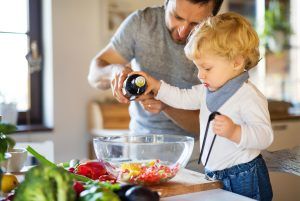Expanding Childrens’ Palates and Worldviews Through Food
Mealtime is an opportunity to provide babies, toddlers and young children with a wide range of experiences that involve their five senses. Incorporating activities around food — and the various cultures from which dishes originate — can help children expand their worldviews and develop stronger brain pathways.
Exploring cultures through food
It can be fun, rewarding and impactful to celebrate cultural food practices with children. Activities don’t need to be complicated, and they don’t need to directly involve physical food. Here are a few ideas to get started:
- Show children pictures of different foods from various countries. Talk with them about how these foods are grown, how they are prepared, and whether the food is a dish itself or an ingredient in a meal.
- Connect the food that children are learning about to what’s already on their day-to-day plates. Certain ingredients may already be a part of a dish that’s more familiar to children. For example, some children may not have tried Indian food before, but they may be familiar with chickpeas, cinnamon or onions.
- Try a new dish on your menu once a month. Talk to the children about the dish’s origins and lead them in exploration of the smells, textures, colors and flavors while trying it.
- Pick a culturally diverse recipe from your menu and have the children decorate it, whether that’s decorating the physical food with toppings or decorating a print-out image of the food. Give children a copy of the recipe to bring home and encourage their family to try it.
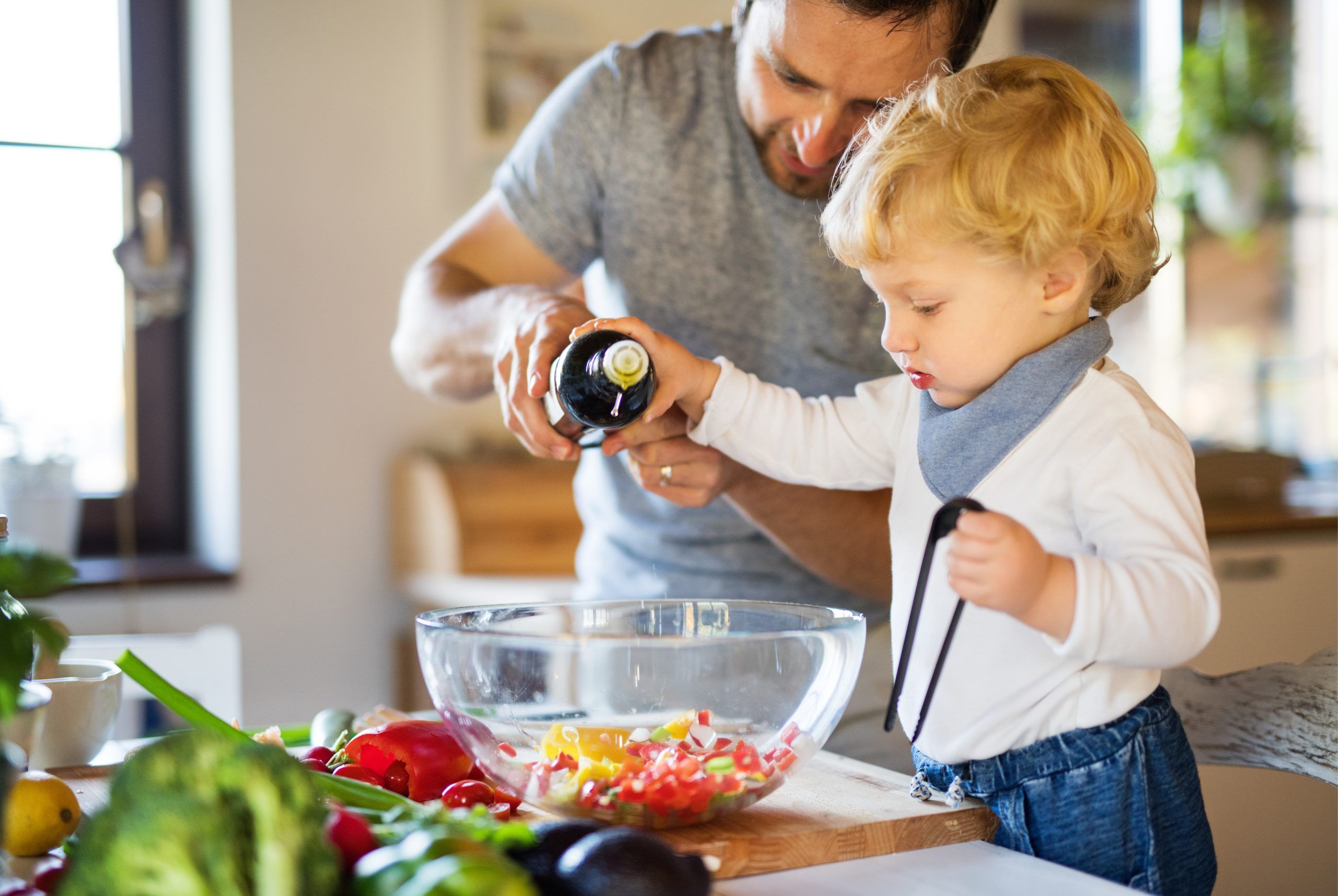
Not sure where to start for dishes? Try this Arepas recipe for children who love the movie “Encanto,” this rice paper rolls recipe to familiarize children with Vietnamese ingredients, or this sushi sandwich recipe.
Working with picky eaters
Trying new foods with children is easier said than done, but there are strategies that can help make the process easier for everyone. Some children develop a fear of new foods around the age of two, but it’s completely normal. The aversion typically peaks between 2 and 6 years and decreases progressively as the child gets older.
The more flavors your child experiences at a young age, the more likely they are to eat a wide range of foods as they grow up. Herbs and spices add flavor to children’s food without adding less desirable ingredients, like sugar or salt, and help their palate expand to enjoy food from a variety of cultures.
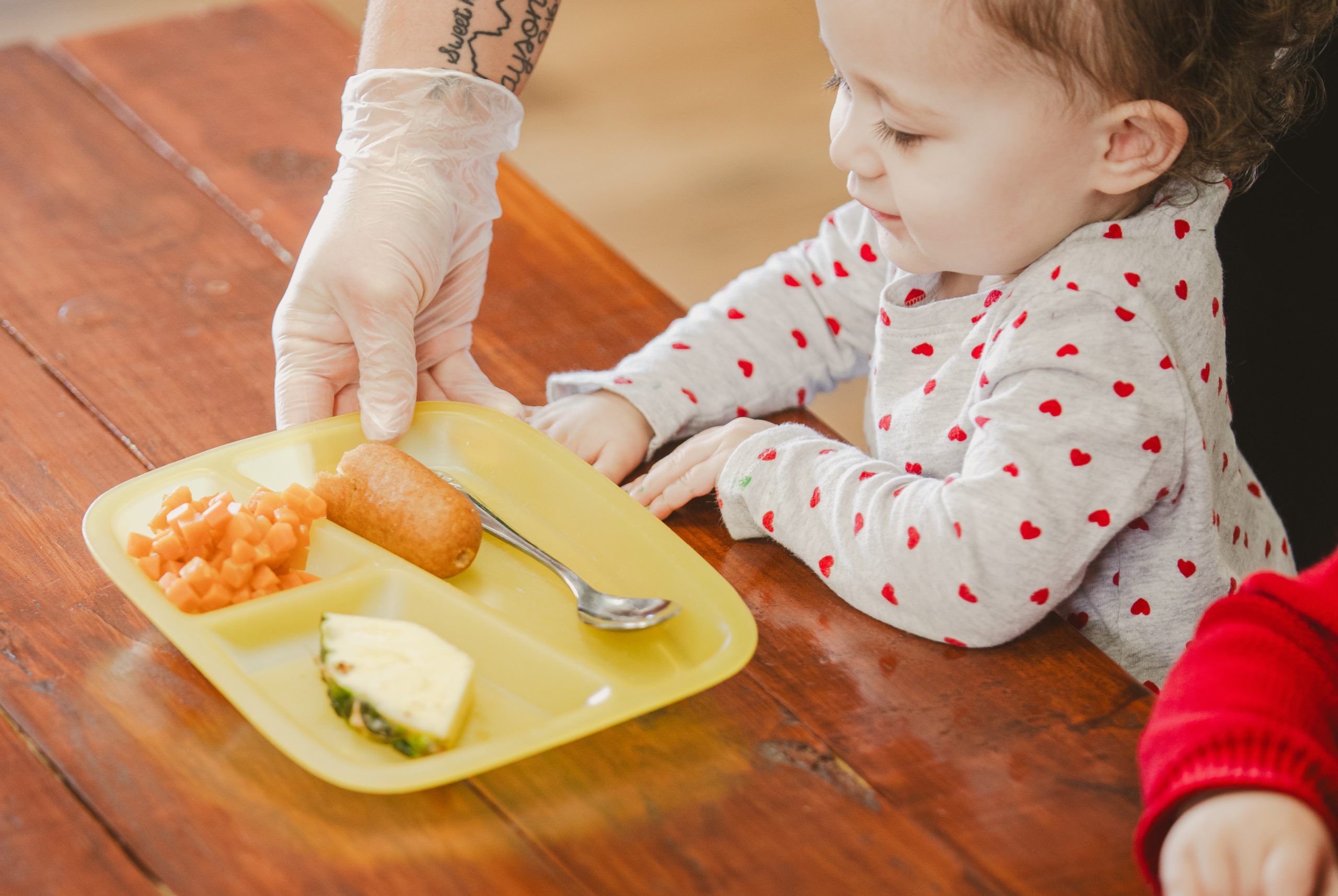
It can take time for children to develop a taste for new flavors. Be calm and patient when reintroducing food that may not be a hit from the first bite. Exposure to variety and colorful options — paired with modeling good eating behavior — can lower children’s opposition over time.
Here are some tips for introducing new foods and flavors:
- Get children involved. They’re more likely to try food if they help prepare it.
- Eat together. Prepare one meal for everyone and don’t make separate food for a certain child.
- Mix it up. Incorporate a variety of different herbs, spices, vegetables, fruits, proteins and grains. If you only give children chicken fingers, that’s all they’re going to want to eat.
- Put a new twist on a familiar dish. Ease into unfamiliar flavors using food like muffins, meatballs, pizza, pasta and tacos to expand into new flavor territories.
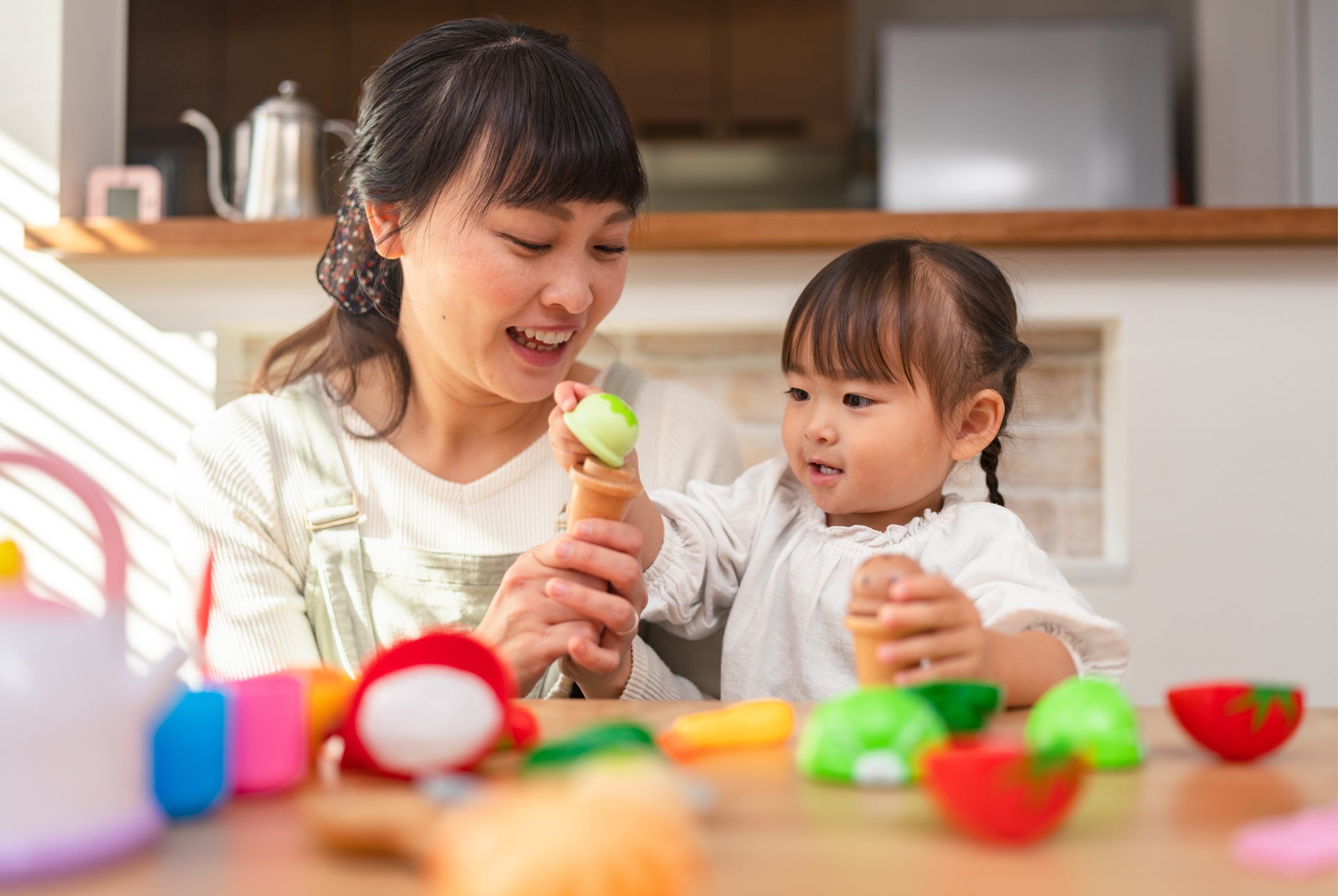
Intentional meals are just one way to boost the quality of care for children. If you’re ready to learn more, Step Up to Quality helps great child care providers become even better. If you’re a parent who’s on the search for providers who are committed to quality care, check out our search tool to find options near you.
Step 5 Spotlight: Jennifer Baumann Talks Unstructured Play and Going Viral on TikTok
We recently chatted with Jennifer Baumann, a Step 5 provider and TikTok extraordinaire, to learn more about her Step Up to Quality journey and how she uses social media to connect with other parents and providers.
How did you decide you wanted to be a child care provider?
It was totally a necessity. I was a mom of three and needed to figure out how to make an income. I was asked to help a friend when her daycare provider had to close and realized I could do it full-time. I decided to get my own home licensed, which led to my CDA, national accreditation and eventually to Step Up to Quality. I love the challenge of always searching for ways to improve quality and offer more to my families. I strive to be a high-quality early childhood program that teaches children to think creatively so they succeed in a complex and ever-changing world.
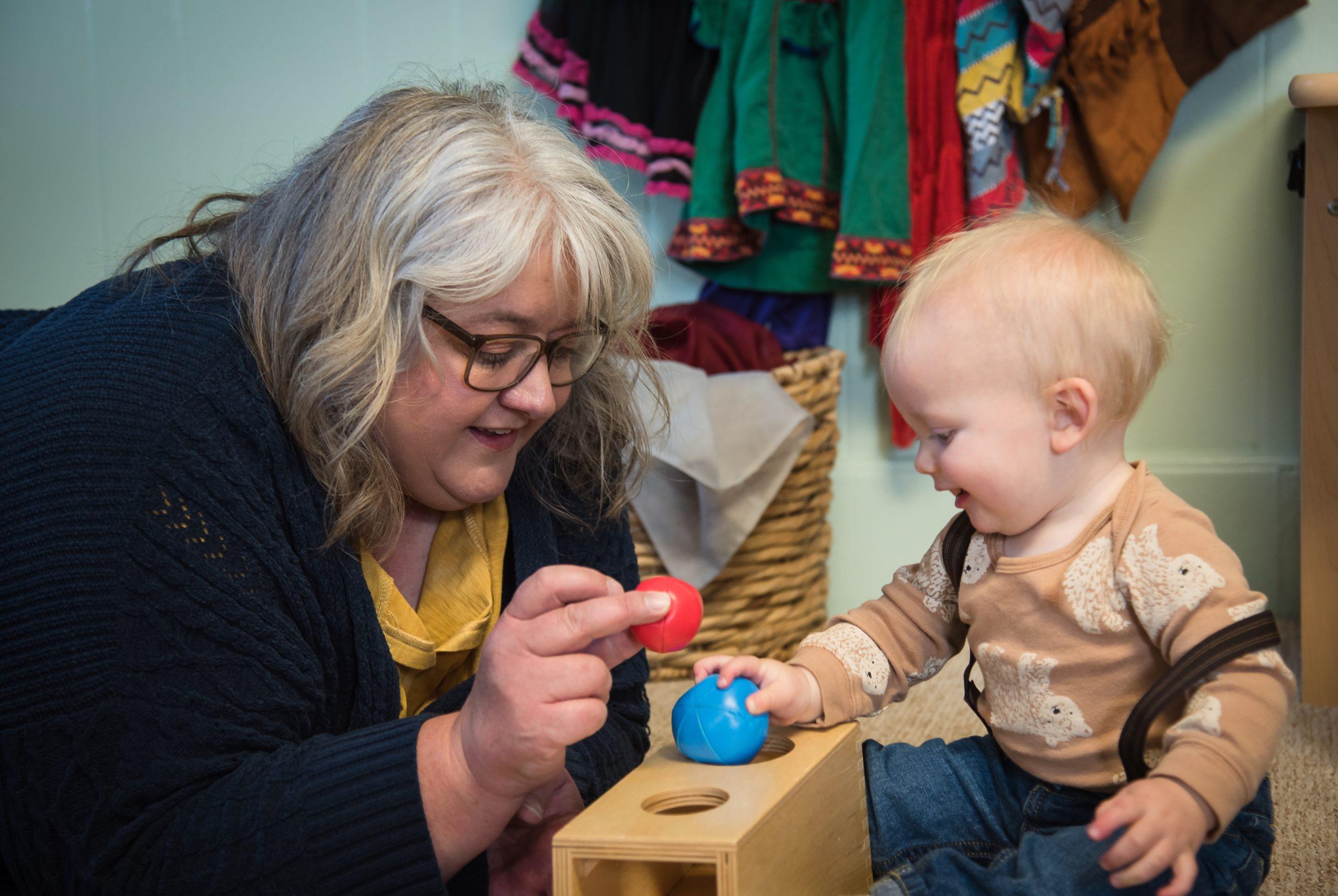
How long have you been running Little Angel Playschool?
We just celebrated 23 years of service! I originally licensed my home as a Family Child Care Home 1 (FCCH 1) in 1999. In 2003, I purchased the house next door to expand our program to a FCCH II. It’s been wonderful. Having my own space for our program allows me to do so much more than when we shared space in my personal home. This year, I hired a co-teacher, Kasey Wild, to work with me full-time. She has been a great addition, allowing us to keep our ratios lower, have more personal connections with the children and offer even more to the littles in our program.
What is your child care philosophy?
This is a tough one, and there are so many buzzwords out there. I am, what one would call, a play-based and child-led program. Some people think that only means free play, but there’s so much more that goes into this program.
I love allowing the children to engage in the “third teacher,” which is the environment. I observe the littles playing, I see what they’re interested in and what level they’re at for their milestones, and I add things to the environment so that they can explore and discover it on their own during their child-led playtime. They’re playing to learn, and they’re learning to play. We do not do what a lot of people consider “preschool.” We don’t do activities that involve flashcards, worksheets or rote learning. Instead, we work to create a social-emotional foundation.
I recently started reading “Illuminating Care: The Pedagogy and Practice of Care in Early Childhood Communities” by Carole Garboden Murray, and I’m head over heels. It’s about looking at care as early childhood education — period. It takes those routines and adds things to them so that they become a magical way to create connections and relationships, helping children build their independence and self-esteem. I’m constantly absorbing more training and looking for what’s next.
How did you learn about Step Up to Quality? What convinced you to join?
There was no convincing needed. I can’t remember if I was part of the pilot program or had just heard through board members of the Nebraska Family Child Care Association, but I was one of the first providers in our area to join. At the time, I was a member of Sixpence, an Infant Toddler Initiative here in the Panhandle, and one of the goals was undertaking Step Up to Quality. It was already on my radar, but it was nice to be a part of an agency that helped fund the implementation of some of these standards.
How does it feel to have achieved the Step 5 level?
It feels so good to reach this level. I was elated, and I didn’t think it was possible. As a family child care home, I feel we have an advantage over centers. I was the only person who needed to worry about getting trained and applying my training, unlike a center that may have staff turnover.
I liked that the process was kind of “a la carte.” If you believe in something or don’t believe in something, you can go in that direction. You don’t lose points; you just don’t earn certain points. I’m a big believer in outdoor and risky play and am currently in the process of getting the Nature Explore certification for my outdoor classroom. A part of that is having some risky or messy play, which doesn’t always fall in line with health and quality standards for Step Up to Quality. But I chose to go this route, so I made up my points in other categories.
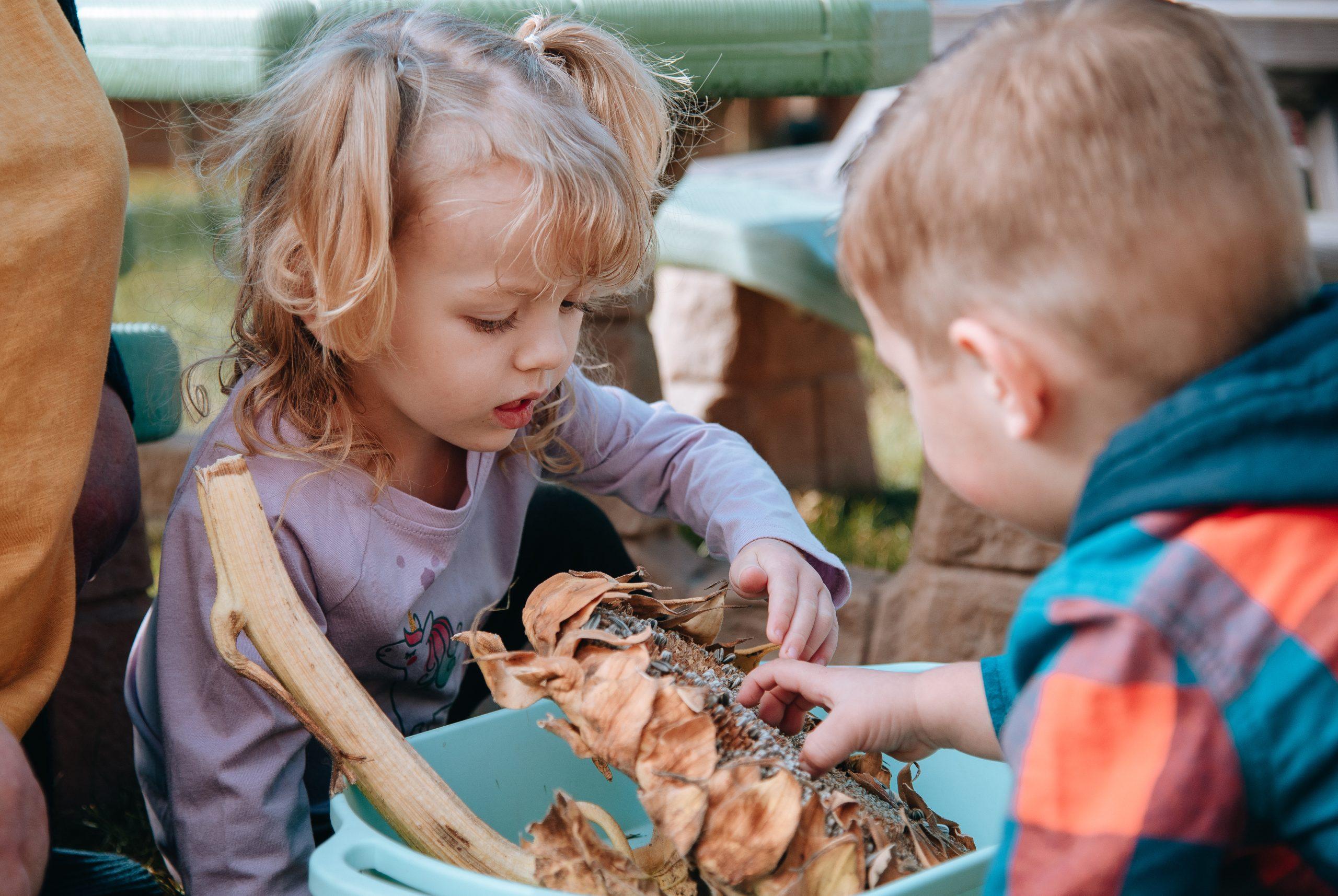
In what ways has Step Up to Quality helped boost the quality of your child care practices? What have you learned and implemented?
A piece of Step Up to Quality is getting trained in an approved curriculum. I chose the creative curriculum, and when we were going through the training, it finally clicked — it’s about the everyday stuff and enhancing those moments to include academic concepts. Care is education.
When you have the observation piece of Step Up to Quality, they come into your program for three or four hours, and you’re expected to hit a certain number of categories. You may wonder, “How am I supposed to do all that happens in a day in this short timeframe?” But it can be done when it’s implemented into the routines of your program.
We don’t do literacy, we do pre-literacy, so we do things like singing during diaper changing time. Pre-science can be talking about body parts. Pre-math can be about walking down the stairs and counting the steps. It’s about being intentional in those everyday routines instead of a specific activity — care is the curriculum.
Do you feel like being a part of Step Up to Quality has been a helpful marketing tool?
Absolutely. Any time you’re involved with an agency that shares the importance of quality and how foundational you are to your communities and the economy, it gives credibility. So, it just gives you that extra confidence to put yourself out there.
Why do you think you have such a large following on TikTok? How do you come up with ideas for videos?
My adult children tormented me when I tried to start TikTok. I said, “I’m going to show you, I’m going to figure this out.” An online provider friend of mine told me to just start, and that’s what I tell people — just start. Post whatever and be true to you. I had one video go viral last year. I had put in my Amazon wish list that I was looking for a doggy window for my fence, and one of my followers sent it to me. My husband installed it on the fence so my children could see the trash truck driver. The video got 9 million views, and I gained thousands of followers over the weekend. From there, my followers slowly kept building.
TikTok keeps me motivated to constantly share the platform of learning through play. I don’t do anything special for my posts, I just share what we’re doing every day. Our day is the content, and I try to share that it’s inexpensive and easy to have children learn through play. Other than that, if someone asks about something in the comments of a post, we’ll make a video about it. I just look at it as a conversation with a community that wants to learn about the importance of play.
It’s interesting to see the connections that you make on the platform. I had someone recognize me at a national conference, and I was there to see someone who I also knew through the internet!
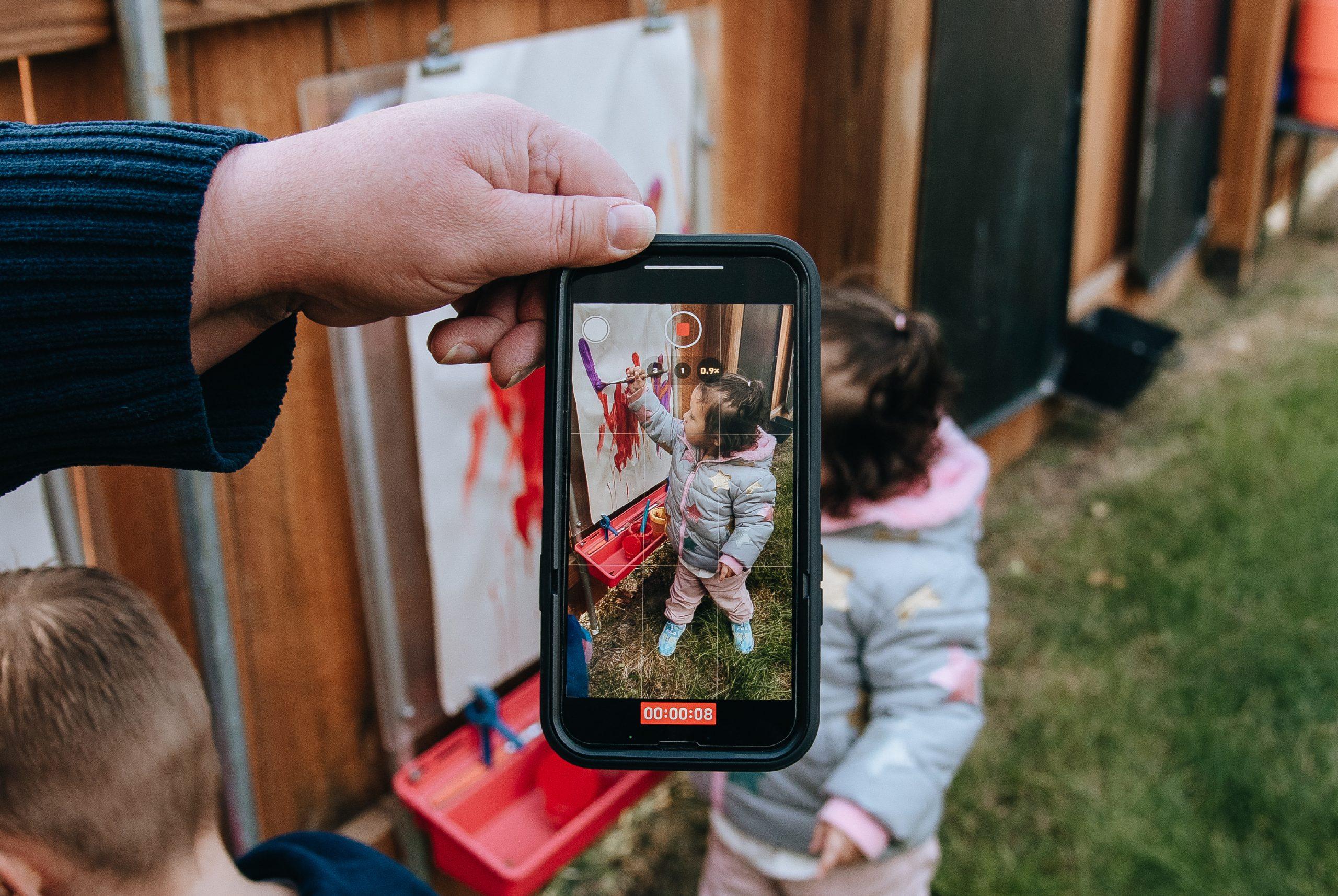
What advice do you have for other providers who want to use social media as a tool to promote their care?
Just do it. We all start off as novices and don’t know what we’re doing, and I don’t know what I’m doing to this day. I just try to be honest and share what I believe in, and sometimes you actually learn how to do things better because someone will share what they’ve done or how they’ve improved what you’re doing. Put yourself out there and use it as a sounding board.
Sometimes providers will market their program with photos or videos that are “cute.” That’s all good and well, and our programs are adorable, but we need to share what the substance is — what they’re learning, how they’re learning and what your intentions are. There’s more to it than play, they’re learning through play.
What words of encouragement do you have for providers who are considering joining Step Up to Quality or are still working through the steps?
Just start! If you have questions, get online. In Nebraska, we have a lot of online pages and local and state associations. Child care should be about community and collaboration, not competition. We’re all in it for the betterment of children, and that makes our communities better, our businesses better and helps everyone in the long run.
If we can all work with one another, we can build so much more. A few of the gals in our community text each other daily with issues and venting and trying to figure out various things. We’re all coworkers, not competitors. I encourage everyone to reach out to other providers in their community.
If you’re still working through the Step Up to Quality steps, the fact that you even signed up to get going is great. Everything you do leads to something else, and you are constantly becoming a better provider. That’s your competition — striving to be a better you than the day before — and the children in your community benefit along the way!
The Importance of Coaching in Early Childhood Education
We know how important high-quality early childhood education is, but how can we continue to boost this quality? An important component is coaching.
If you’ve ever been in a classroom full of energetic children, you know another expert perspective can be very helpful. Coaching is professional development that emphasizes the application of knowledge to practice — and it’s emerging as a critical factor in overall quality improvement in early childhood settings. That’s why Step Up to Quality offers free, voluntary coaching to help programs of all types, big or small, create individualized goals and action plans to improve quality.

Benefits of coaching
Early childhood education settings can benefit from group and one-on-one coaching, and we make both available to Step Up to Quality participants. Our specialized, professional coaches help providers navigate through the process and ultimately improve educational experiences for children.
Enrolled providers can begin working with a Step Up to Quality coach once they achieve Step 1 (or enter at Step 3).
The first coaching available is Quality Foundations Coaching, a new group coaching option that is facilitated through weekly virtual meetings. Providers join together to learn about high-quality practices, gain motivation, prepare for one-on-one coaching and build a network of support across the state — all while having fun!
One-on-one coaching is available once programs complete the requirements for Step 2. Read one of our previous stories that highlights how a one-on-one coach approaches her work with Step Up to Quality participants.
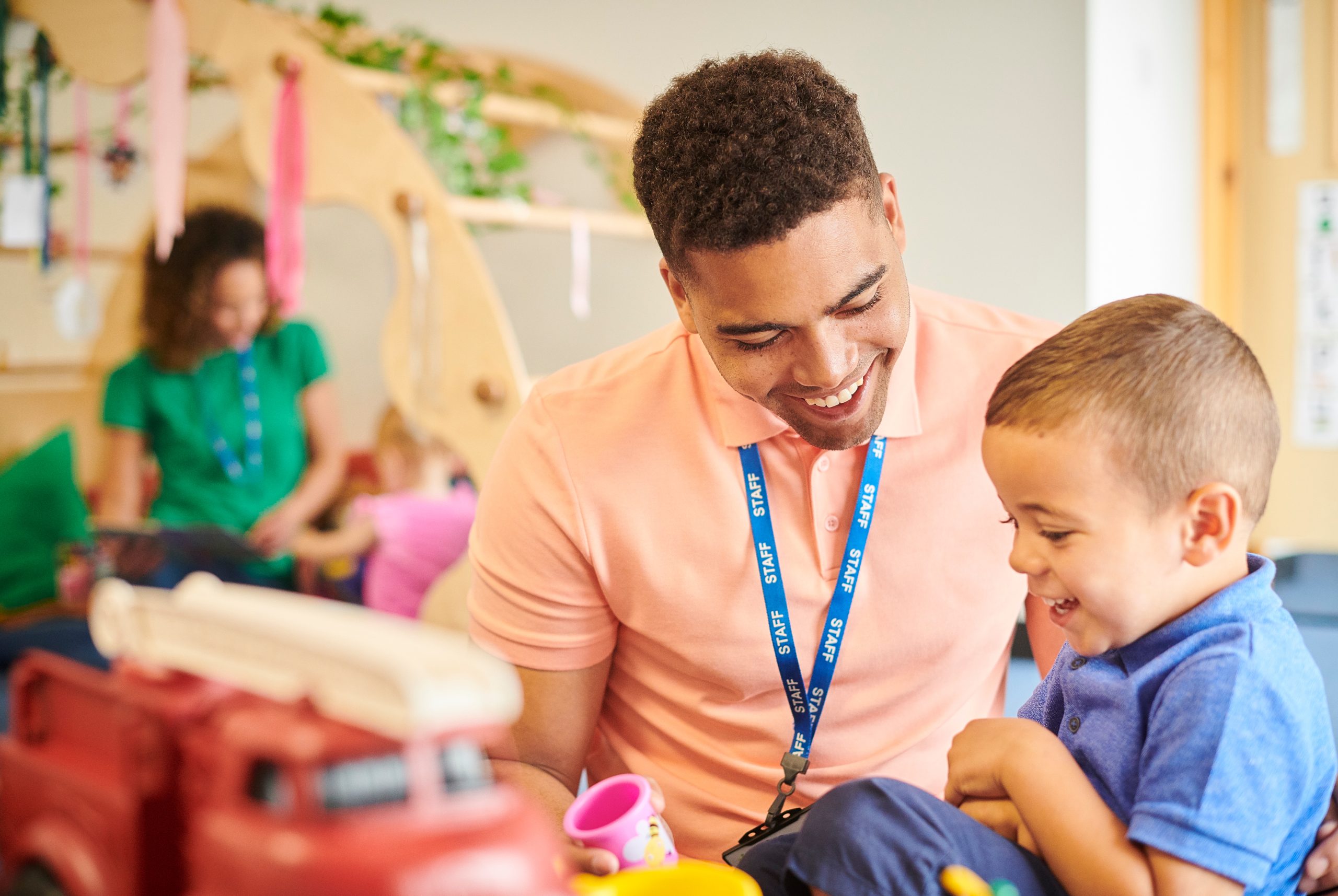
What to expect from coaching
A good coach is a supportive resource, not a bossy authority. Coaches help you identify and maximize your strengths and guide you along your path to quality improvement. For those child care directors or owners who are going through the Step Up to Quality program, a free coach is a big asset to participating.
Your coach may ask:
- What is your Why?
- What do you want your program to accomplish?
- What have you tried so far? How has it worked?
- What options do you and your staff see for moving forward?
- What kind of input do you want from a coach?
- What is your program’s plan for moving up to the next step?
- How can a coach best support your program?
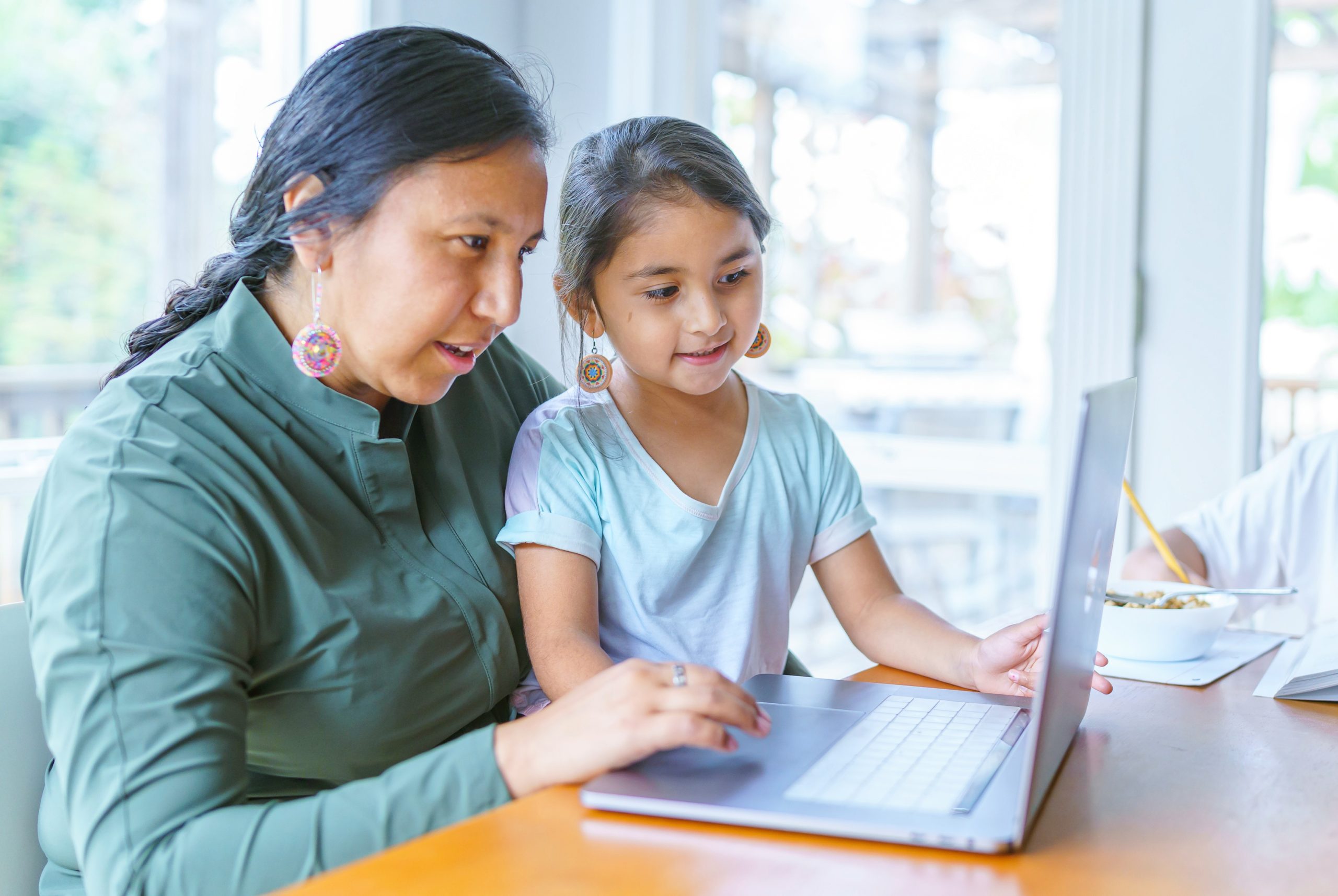
You are not required to have a coach, but many participating programs agree that this is one of the most beneficial resources offered by Step Up to Quality. Coaches provide an extra layer of support and encouragement for you and your program staff as you work toward your goals.
Ultimately, coaching benefits you, your staff and the children in your care. From the way our coaches interact with providers all the way through to how you interact with children, we can all adopt a coach mindset that prioritizes guidance, support and collaboration in learning.
Ready to take advantage of coaching? Learn more and sign up here. If you aren’t involved with Step Up to Quality yet, we’re excited to get you on board. Start the process with our free online orientation.
Spend Quality Time with Us
We’re thrilled to announce the launch of our podcast, Quality Time!
We decided to create a podcast for many reasons. We noticed there aren’t a lot of podcasts directed to early childhood education providers. And none targeted specifically for providers in Nebraska. We’ve also seen podcasts grow in popularity, so we wanted to tell the Step Up to Quality story in this impactful and personal way.
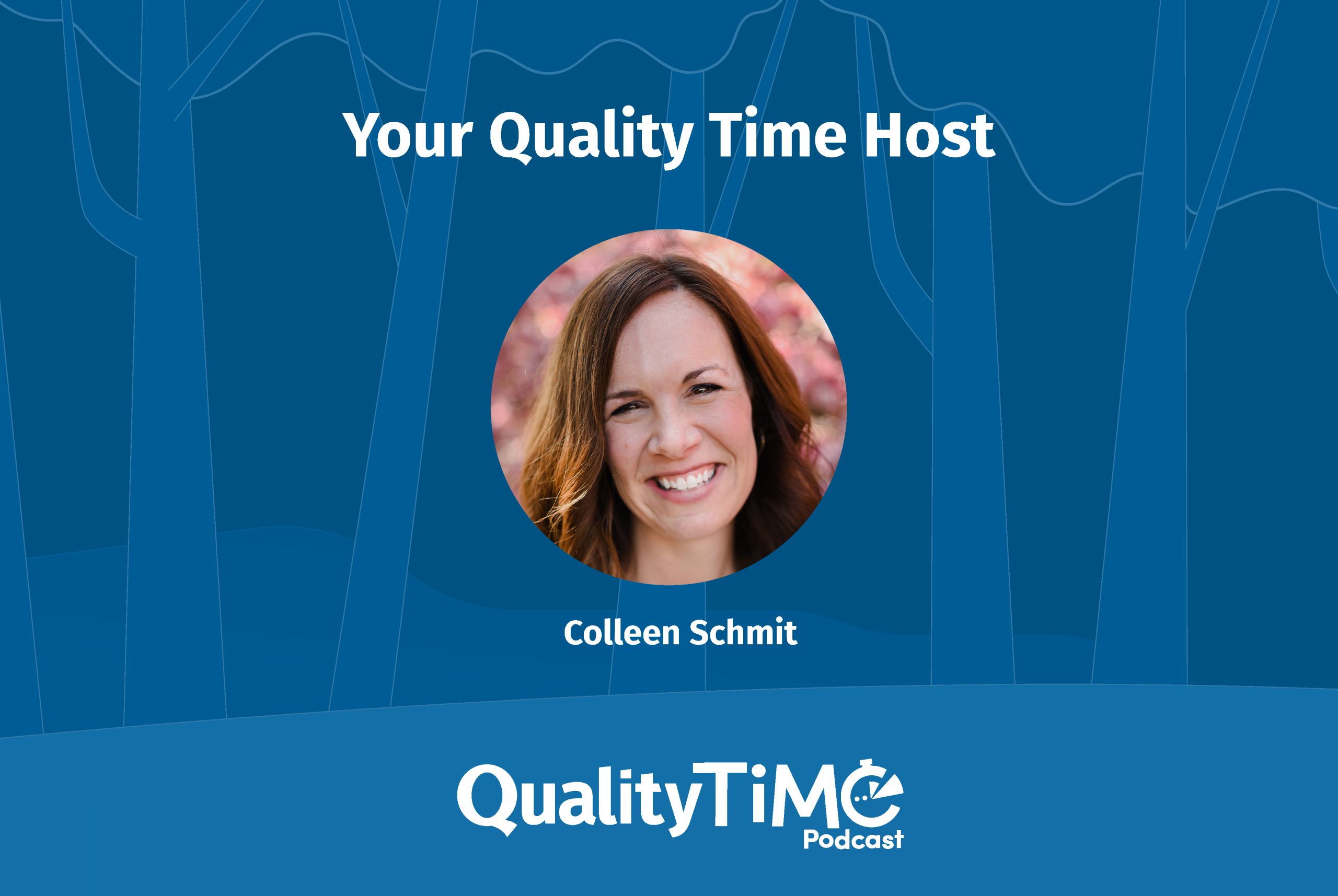
We are fortunate to have the most wonderful host for Quality Time. Colleen Schmit, an educator, speaker, author and an observer with Step Up to Quality. In each episode of Quality Time, Colleen interviews different early childhood education professionals from across the state.
Each episode will focus on uplifting those in early childhood education — providing a self-care space, showing appreciation for professionals in the field and giving you a new platform to learn from others in Nebraska. And we know your time is valuable, so each episode is about 30 minutes, give or take.
The inaugural guests are from our own team — Lauri Cimino, director of Step Up to Quality, Lynne Cook, the coach specialist, and Jenny Fleming, the quality specialist, talk about their own journeys in the field, discuss what it’s like to participate in Step Up to Quality, and express their gratitude for early childhood professionals.
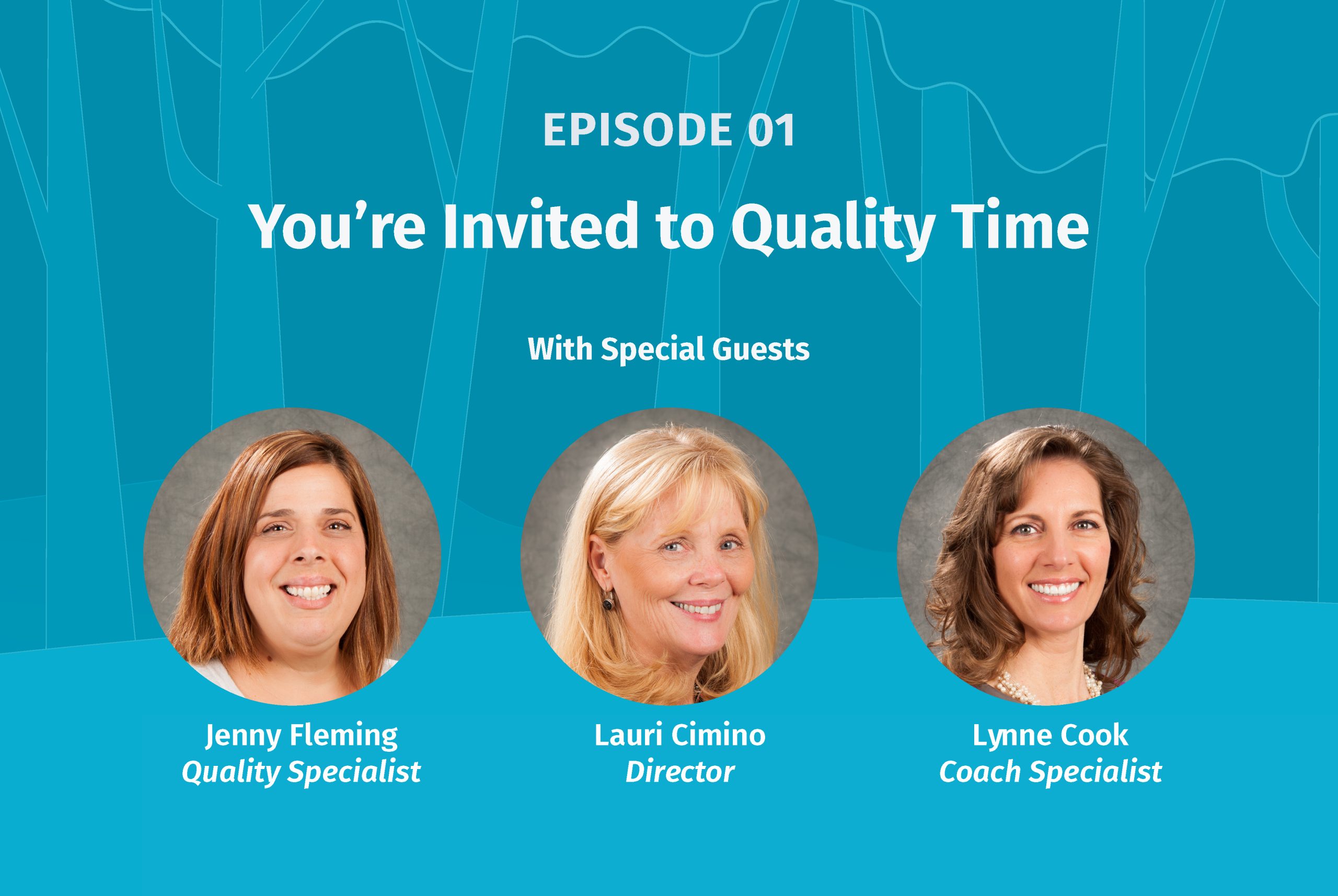
Subscribe to the Step Up to Quality provider newsletter using the button below to get early access to our first episode. We’ll send out the first episode to newsletter subscribers on Tuesday, October 18th!
Future episodes for this first season will be released every other week, including topics like the importance of coaching, continuing your learning journey and more. This is a two-way conversation, so please let us know what you think of the podcast and what you’d like to hear in future episodes by emailing us at nde.stepuptoquality@nebraska.gov.
We hope this podcast will make you feel seen and appreciated, because that’s exactly why it was made. We look forward to spending Quality Time with you!
Learn How Step 2 Updates are Supporting Providers
Whether you’re already enrolled in Step Up to Quality or are considering enrolling, we’ve got some exciting news regarding our latest program updates: we’re reducing the training requirements for Step 2, beginning in October 2022.
If you’ve already completed Step 2, wonderful! All of the training that we offer to providers is valuable, and we’re glad you gained this knowledge. These Step 2 changes, along with other program updates, were guided by a committee of early childhood education professionals who gathered feedback from three webinars (with a total of nearly 300 participants) and 120 survey responses.

The intention of reducing these hours is to ensure even more providers can find the time to continue their Step Up to Quality journey, ultimately improving the quality of early childhood care for even more of Nebraska’s children.
What’s new for Step 2
Step 2 is all about training. The important thing to remember about Step 2, and about the whole Step Up to Quality process, is that it’s self paced. It’s not a race, so don’t feel pressure to get through these training sessions in a hurry. Beginning in October 2022, here’s what’s new for Step 2:
- Director/Step Up to Quality designee must complete at least 4 Early Learning Guidelines (ELG) Domains (24 hours): Nebraska’s Early Learning Connection regions are offering $15 ELGs to anyone working in a Step Up to Quality participating program. Contact your local Early Learning Connection Coordinator to learn how you can receive a 50% reduction in registration fees for all ELG training.
- Go NAPSACC: The 20-minute Go NAPSACC orientation video is no longer required for Step 2 (this began in June 2022).
- Special Care training (3 hours): Find and register for this training here.
- Introduction to the Environment Rating Scales or Introduction to the CLASS training (4 hours): Find and register for these trainings here.
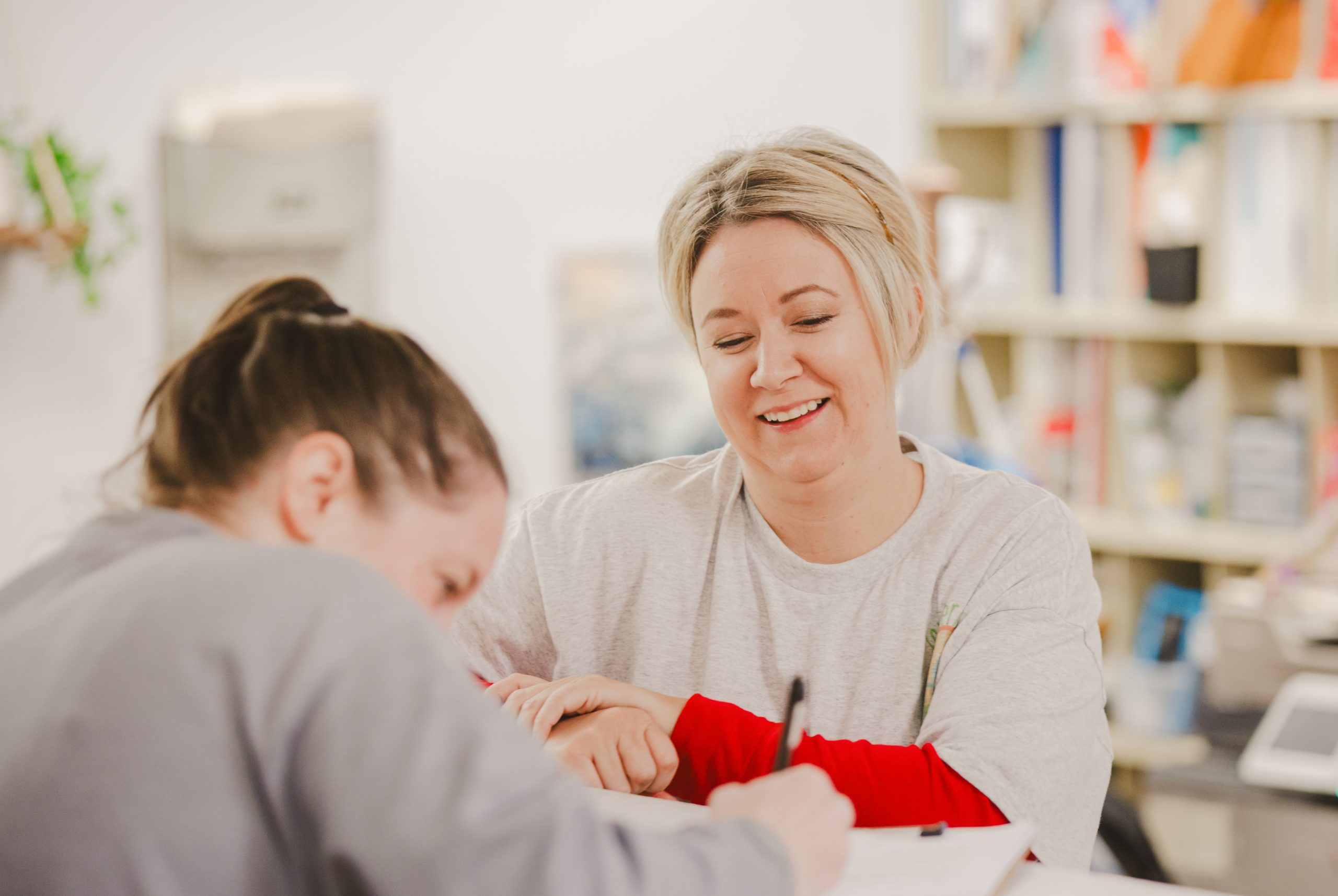
Learn more about other updates to the whole Step Up to Quality process, like earlier coaching opportunities and what other updates you can expect in 2023.
How Reading to Children Improves Kindergarten Readiness
If you’re an early childhood professional, reading to children is probably already on your agenda. For some children, your classroom may be the only place they get this experience. According to a 2019 study in the United States, nationally representative data suggests that around 25% of caregivers never read with their children, creating a “word gap.” Cumulatively, over the five years before kindergarten, researchers estimate that children from literacy-rich homes hear approximately 1.4 million more words during storybook reading than children who are never read to.
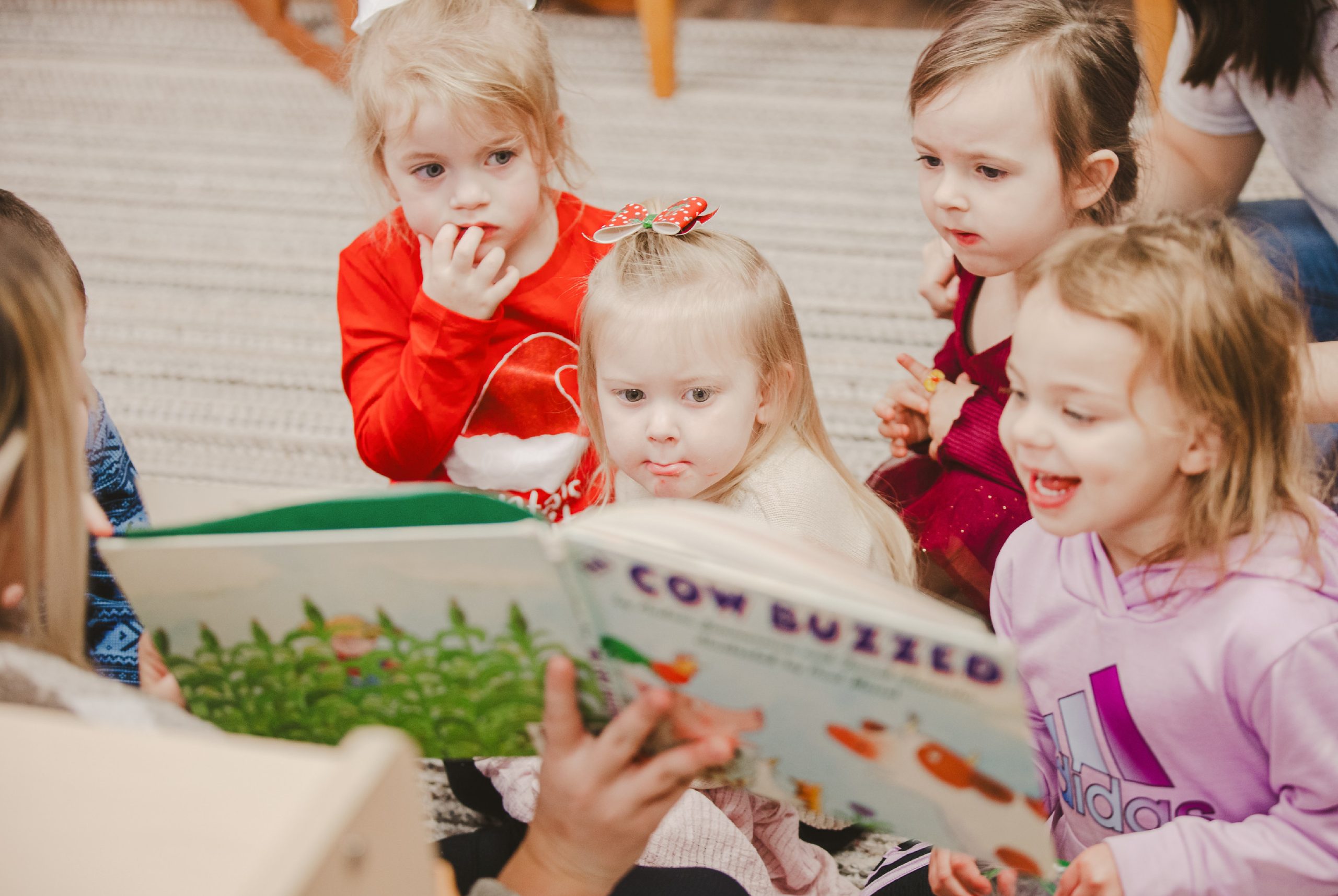
Reading to children supports school readiness in an incredible amount of ways. In addition to phonemic awareness and reading comprehension, hearing stories expands children’s vocabulary as they encounter words that may not be used in their daily lives. It also aids their creativity and imagination when they hear stories, visualizing new environments and guessing what’s coming next. Even further, children’s social and emotional development is boosted when hearing stories about challenging experiences or potentially emotional situations, like starting at a new school or resolving conflict between two characters.
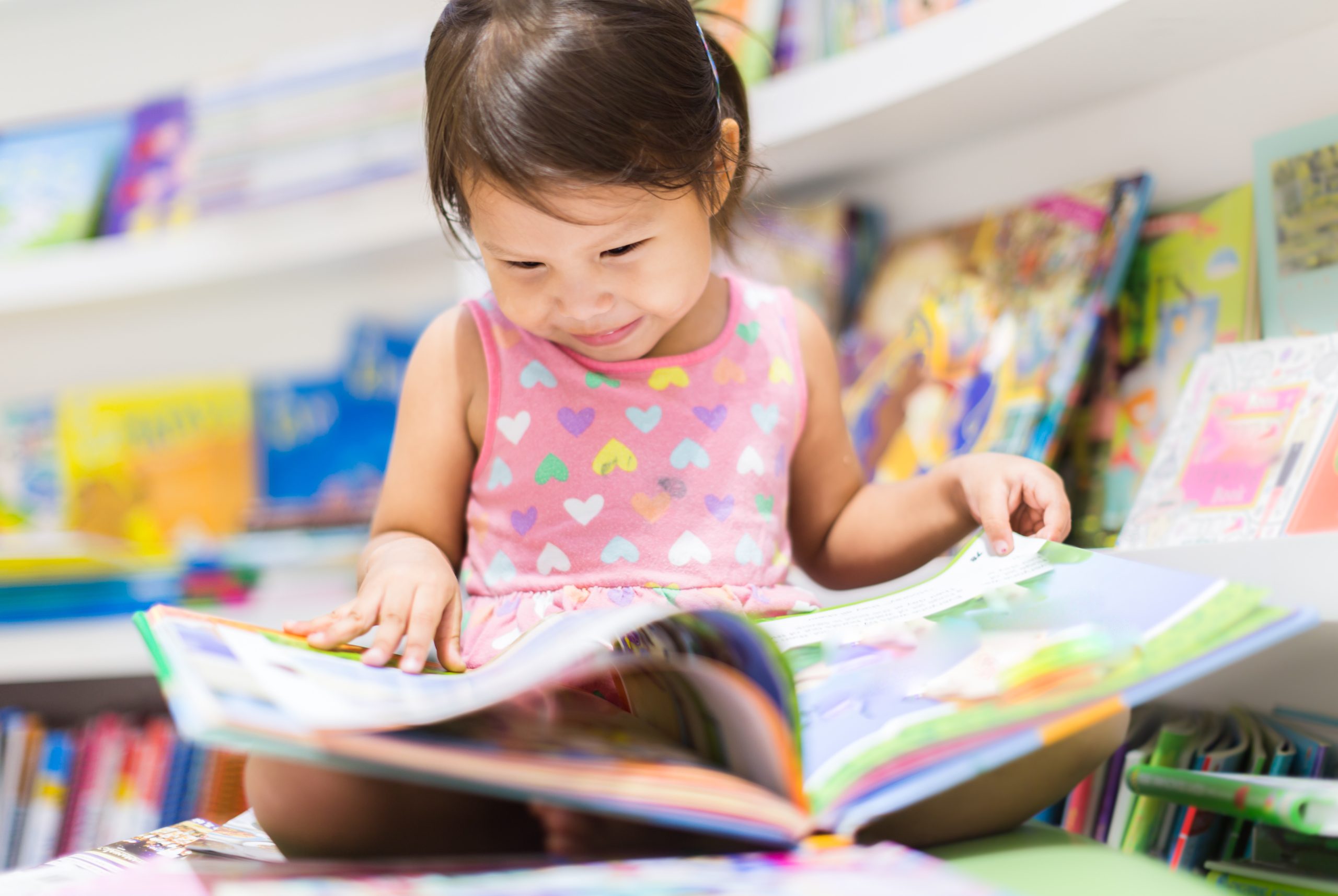
Intentional reading for different age groups
All children can benefit from having a caregiver read to them. Here are some tips for how to make the most of story time with each age group to help children develop skills and gain a life-long love for reading. These tips are good to use both in the classroom and at home — each environment should encourage reading to help close the word gap.
- Reading to babies: Babies who are six months old or younger benefit from books with high-contrast, bold pictures. No words on the page are necessary, but you can talk to them as you flip through the pages. As babies get closer to 12 months, consider incorporating books with simple words or phrases that relate to the pictures. As babies begin to babble and talk, try engaging them in conversation about what’s on the page. Ask them questions (“Is that snake green?) or declare what you’re seeing (“Look at that silly puppy!”)
- Reading to toddlers: Toddlers are more interested in books with an action-filled plot and pictures than too many words on the page. Introduce them to books that show examples of how a character’s actions impact the story or how the character overcomes an obstacle. You can make observational connections to their life, too. (“There’s a bear in this story! What other stories have we read about bears?”) Ask children to describe pictures and repeat phrases used in the story.
- Reading to preschoolers: This age group can start to handle more intricate plots and more words on the page. Ask preschoolers questions as you progress through a story to check their comprehension and encourage their imagination. These questions should be more focused on how the story may unfold based on the narrative (“What do you think happens next?”) rather than observational questions.

If you’re ready to learn other ways to boost the quality of your care, Step Up to Quality helps great child care providers become even better. If you’re a parent who’s on the search for providers who are committed to quality care, check out our search tool to find options near you.
Step Up to Quality Celebrates 8 Years
Step Up to Quality is now eight years old!
We celebrated our anniversary in July and recently released our annual report. The best news is that we are continuing to grow.
We’re nearly at the 700-participating-providers mark! Which leads us to our most meaningful statistic: nearly 38,000 children have been educated and cared for by a Step Up to Quality-rated program in Nebraska.
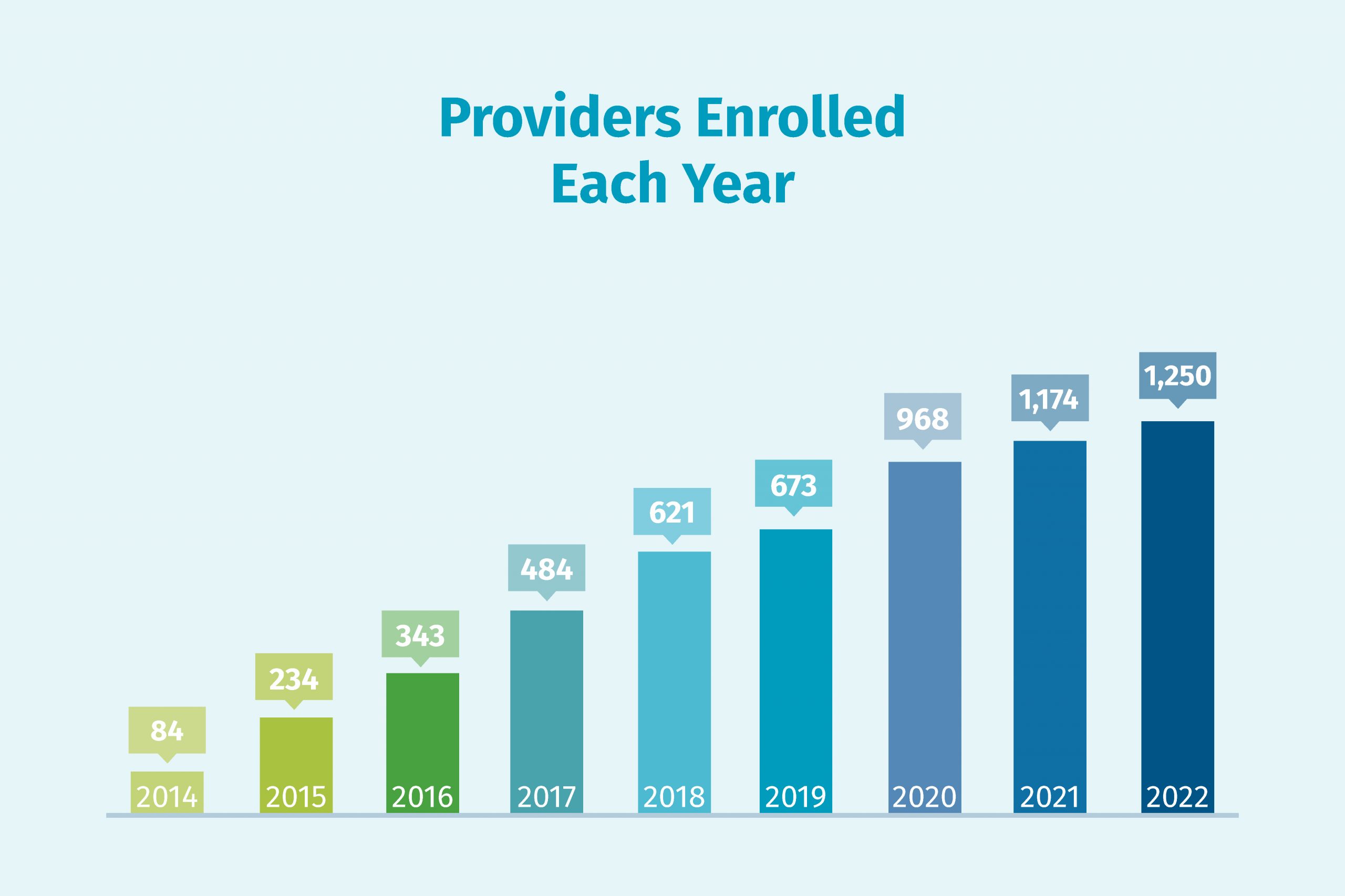
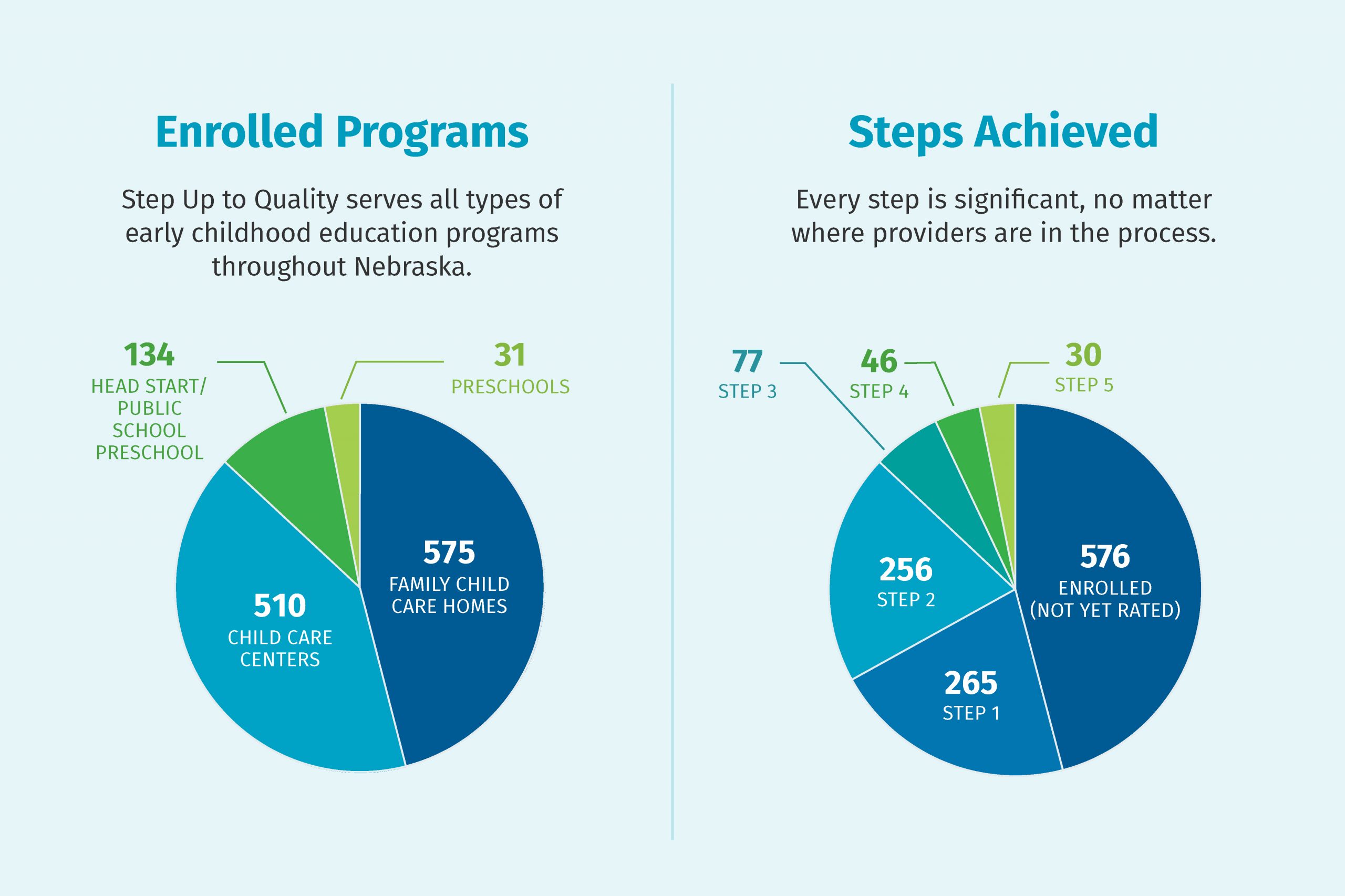
Read more about our impact in our annual report.
Despite the challenges that the pandemic continues to bring, early childhood education providers all across the state have quite literally stepped up and shown their commitment to continuous quality improvement by participating in Step Up to Quality. We’re so proud of each and every one of them.
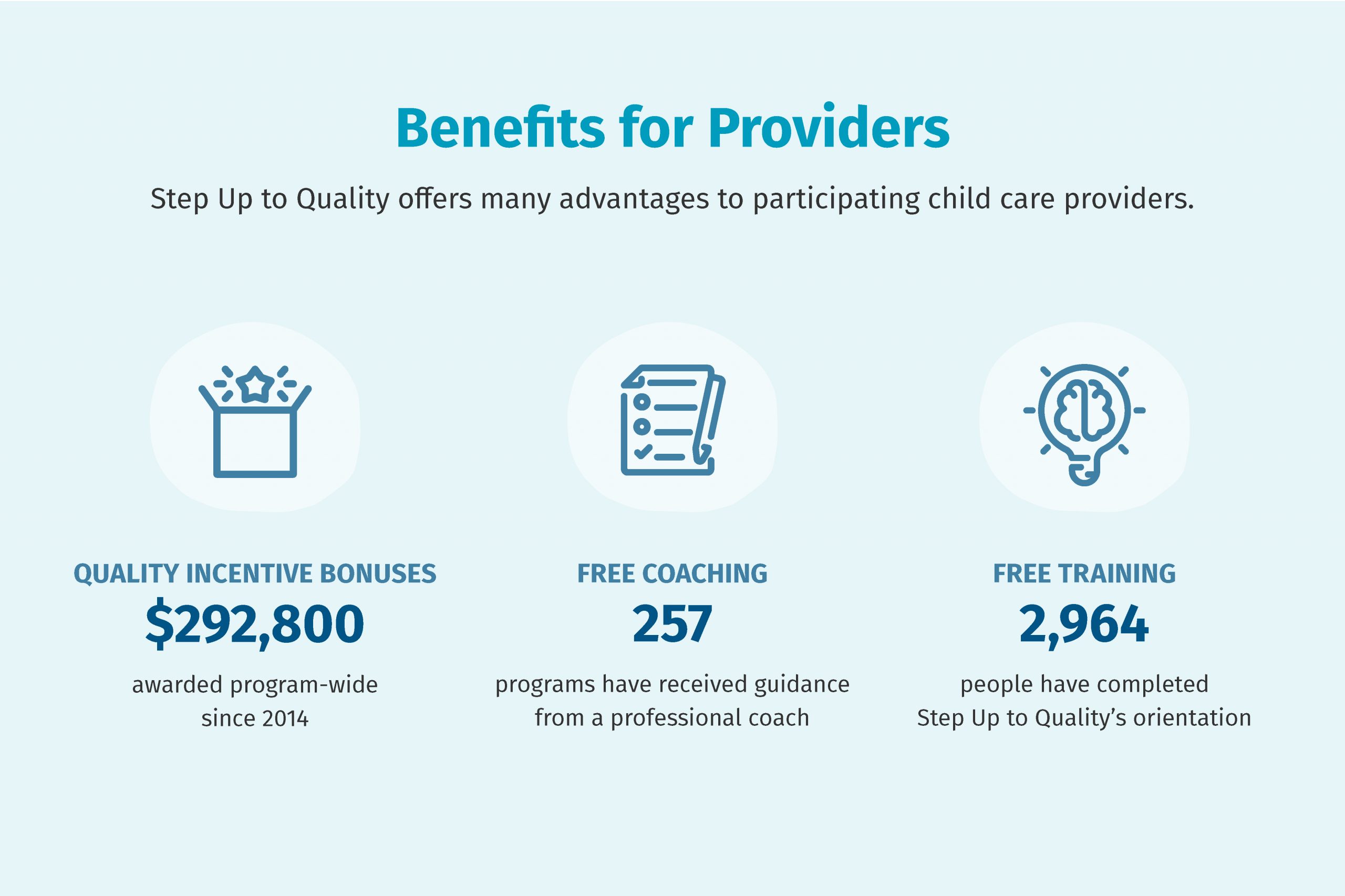
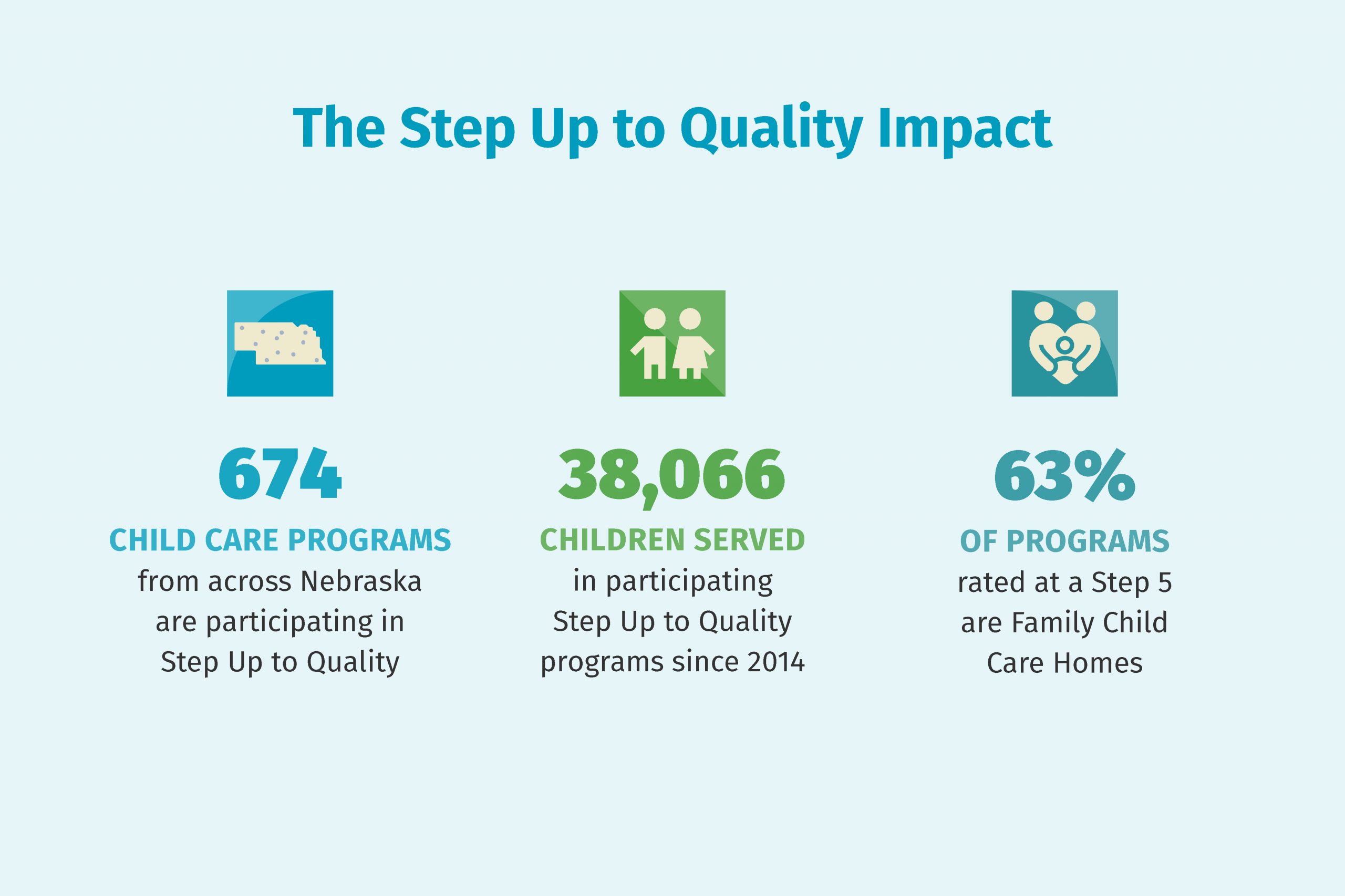
Quality improvement continues to be something we take seriously as a team, too. We have some exciting announcements related to how we are improving the quality of the Step Up to Quality process, so be sure to follow us on Facebook, Twitter and Instagram for more information about these changes.
Here’s to more growth, high-quality care and healthy children who love learning!
Earlier Coaching Now Available for Nebraska Early Childhood Education Providers
High-quality early child care and education is crucial to a child’s future success, and we know that supporting the professionals who shape these children is just as important. Now, Step Up to Quality is offering more coaching and peer support for providers at an earlier stage in our program.
What is Step Up to Quality?
Step Up to Quality helps early child care providers and educators recognize and improve the quality of their practices, going beyond what is required to do better for their children’s and families’ futures. The five steps of our program guide providers on a path to higher quality at their own pace, and completing any step is a reason to celebrate.
We greatly value feedback from our providers, and we learned through meetings and surveys in the Step Up to Quality 2.0 process that they want access to earlier coaching on their Step Up to Quality path. Previously, providers would not have the option to request a free, one-on-one professional coach to support their classroom, home or center until they completed Step 2.
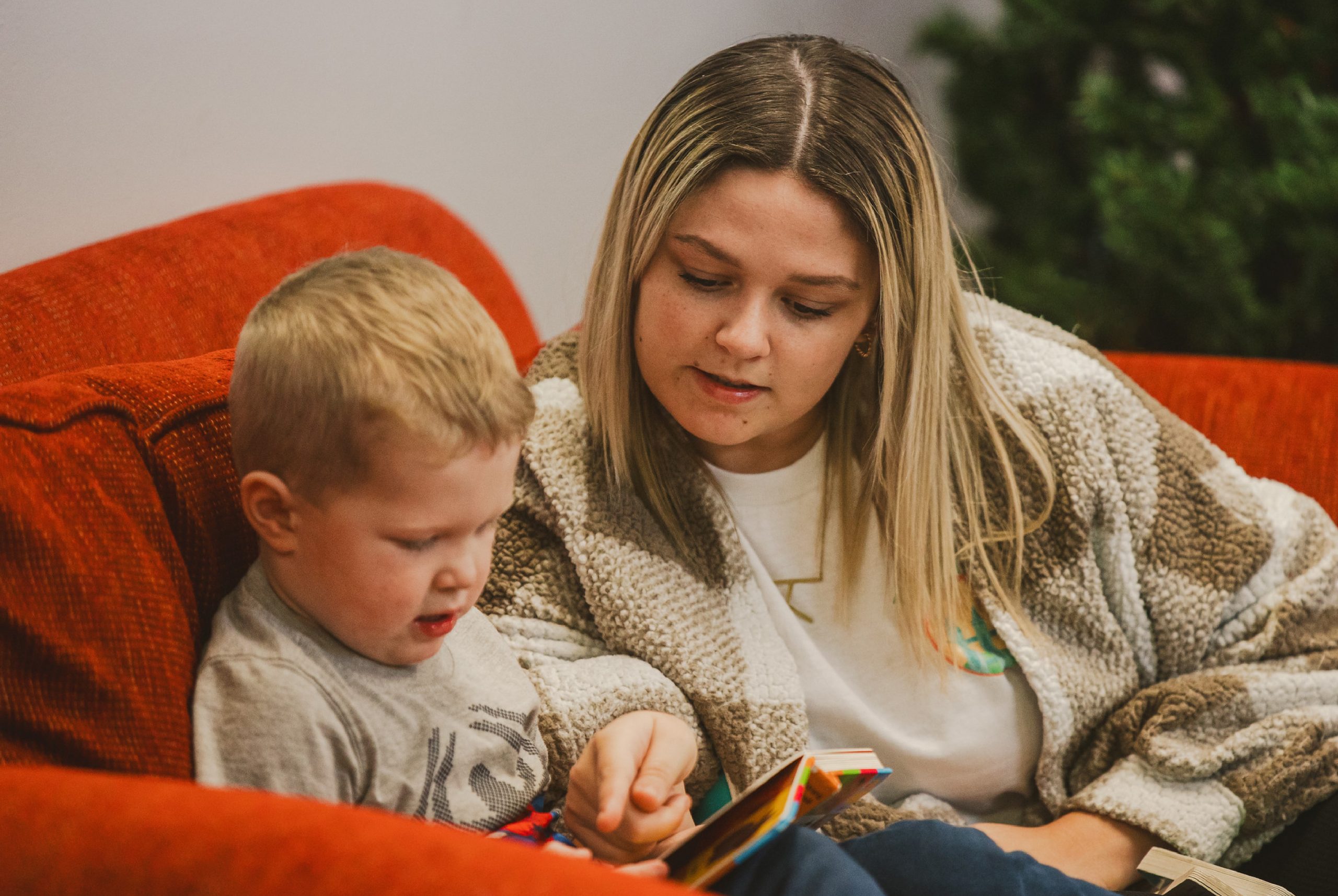
More coaching and network building opportunities
Now, providers at Step 1 (or entering at Step 3) can access coaches during a series of virtual group meetings in what we are calling quality foundations coaching. We intend to group providers by child care type, such as family child care providers or child care centers. We think this is a wonderful opportunity to not only provide earlier opportunities to meet with our excellent coaches but to build a network with other providers in each cohort to share advice and celebrate successes.
“We want to empower and build the capacity of these providers. They’ve been doing this work for many years, so their experiences and knowledge is incredibly valuable to share with the group among experienced and newer providers,” said Coach Specialist Lynne Cook. “We’re helping each other do our best.”
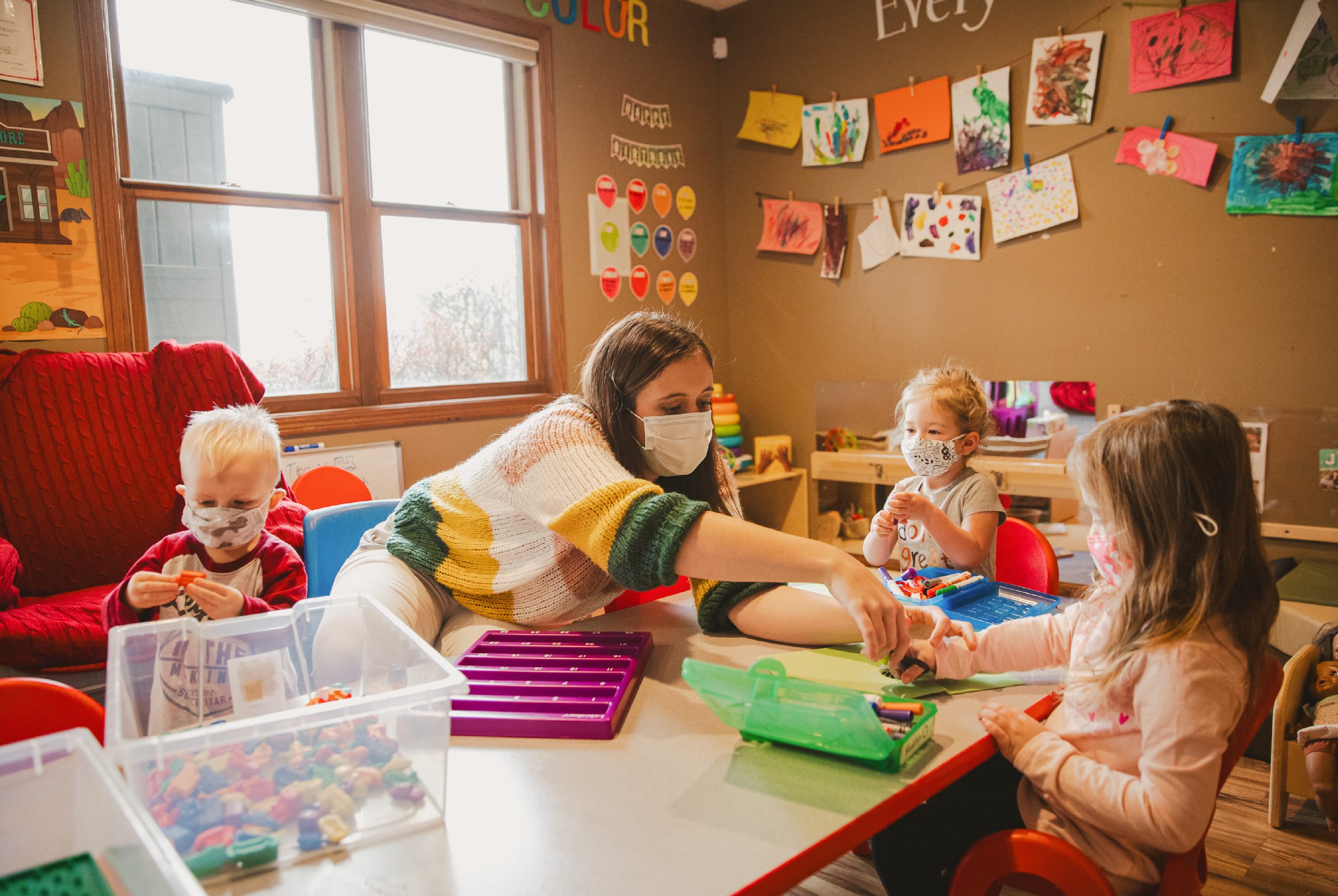
Benefits of coaching
Both forms of coaching support are completely free and voluntary for providers enrolled in Step Up to Quality. The quality foundations cohorts will focus on what evidence could be collected to fulfill high-quality indicators. One-on-one coaching is more intensive, focusing on a provider’s child care practices and setting to understand and support their personal vision and goals.
“We want to honor providers’ philosophy,” Lynne said. “A coach should be viewed as a partner in this. They’re a guide through the process and a resource. Providers get to decide what their program should look like.”
If you’re already enrolled in Step Up to Quality, you can request to join a quality foundations cohort. If you’re a provider who’s looking to boost the quality of your care, you can enroll in our online orientation when you’re ready to learn more and get started!

Interested in becoming a Step Up to Quality coach?
We’re always open to recruiting more coaches who meet early childhood qualifications. Our coaches are experienced professionals who are looking to shift into more flexible, part-time schedules. Learn more about coach qualifications and complete our coach application. Contact Lynne at lynne.cook@nebraska.gov or 531-207-2218 with any questions.
How to Help Children Stay Present with Mindfulness Activities
Take a deep breath in, hold for three seconds, and let it out. Simple activities like these can help you become more aware of the present. Mindfulness allows you to tune in to what’s happening now, whether that’s the different smells or noises you hear around you. Being mindful is simply being aware of what you are experiencing in that moment.
Benefits of mindfulness for young children
While children might not have a meeting they’re running late for, or wake up and realize they forgot to do laundry, they too have to overcome different stressful situations. Babies cry when they need something, and toddlers try to communicate but can have a hard time expressing their needs with words. Every stage of life brings new and different adversities people must overcome.
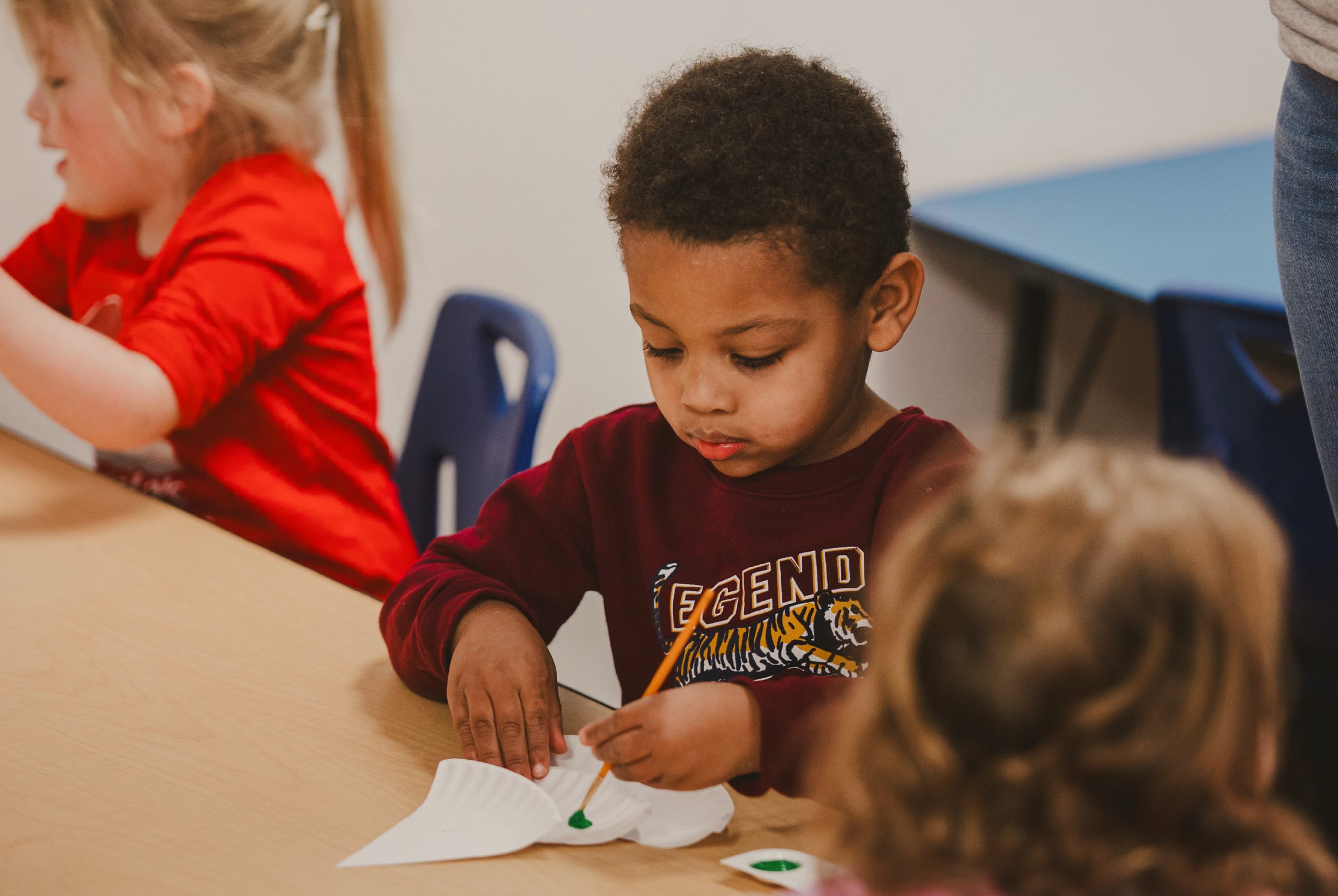
By teaching children at a very young age how to appropriately find ways to work through their stressors, children will be able to carry such practices into adulthood. The ability to retain these habits is possible because mindfulness can chemically change the brain. A study done by researchers from the University of British Columbia and the Chemnitz University of Technology found that the anterior cingulate cortex, the part of the brain that is responsible for self-regulation, had performed better in people who practiced mindfulness compared to those who did not. Their findings showed self-regulation works to purposefully direct attention and behavior. The anterior cingulate cortex is also associated with learning from past experiences and helping to choose between right and wrong. These optimal learning skills can help enhance how children learn at such an early stage of their cognitive development.
Mindfulness might seem like another fad, but teaching mindfulness to children does in fact have lasting effects. It gives children the tools to build confidence, deal with awkward or challenging situations and cope with stress. Mindfulness helps with three very important skills developed in early childhood: increased focus, improved academic performance and decreased levels of stress.
Tips for incorporating mindfulness into everyday life
When it comes to teaching children about mindfulness, it is better to slowly warm them up to the idea rather than diving in head first. Make sure they are actually understanding and aware of what is around them and not just doing as they are told. After you are done introducing children to the idea of mindfulness, they can be more receptive to sitting still and focusing on themselves. Try these easy and fun introductions to mindfulness.
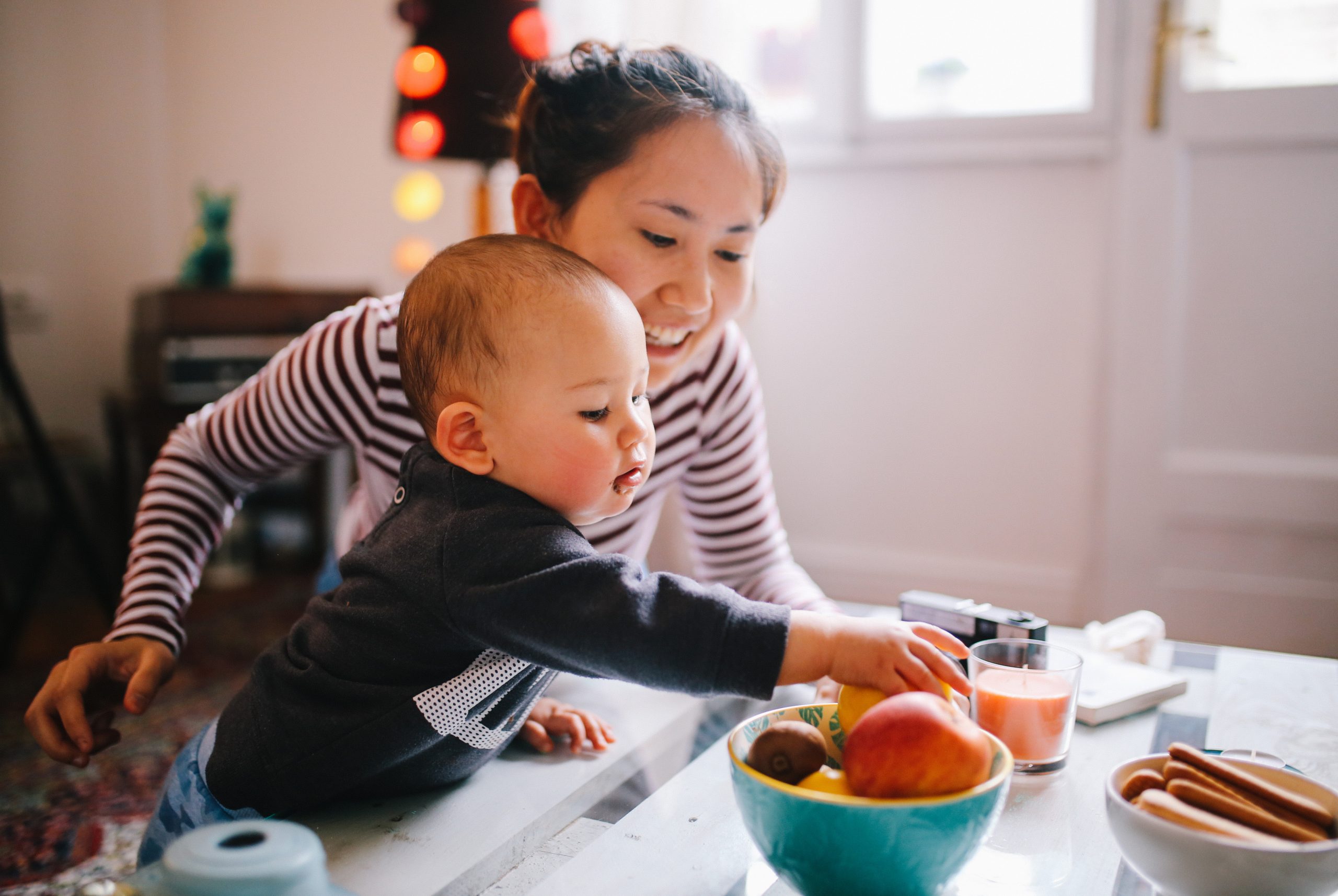
Snack time mindfulness
-
- Start by giving out an age-appropriate snack
- Before eating, have children smell the snack and describe what they smell
- As they are eating, ask them to describe what they taste or feel on their tongue
- After eating, ask them to describe how they felt while eating the snack
Teddy bear breathing exercise
-
- Have children lie down with a stuffed animal on their belly
- Ask them to breathe in and breathe out
- As they are breathing, have them notice how the stuffed animal moves up and down with every breath they take
These exercises introduce children to the idea of being aware of their senses. It also provides them with a fun way to experience mindfulness by having a snack or playing with a stuffed animal.
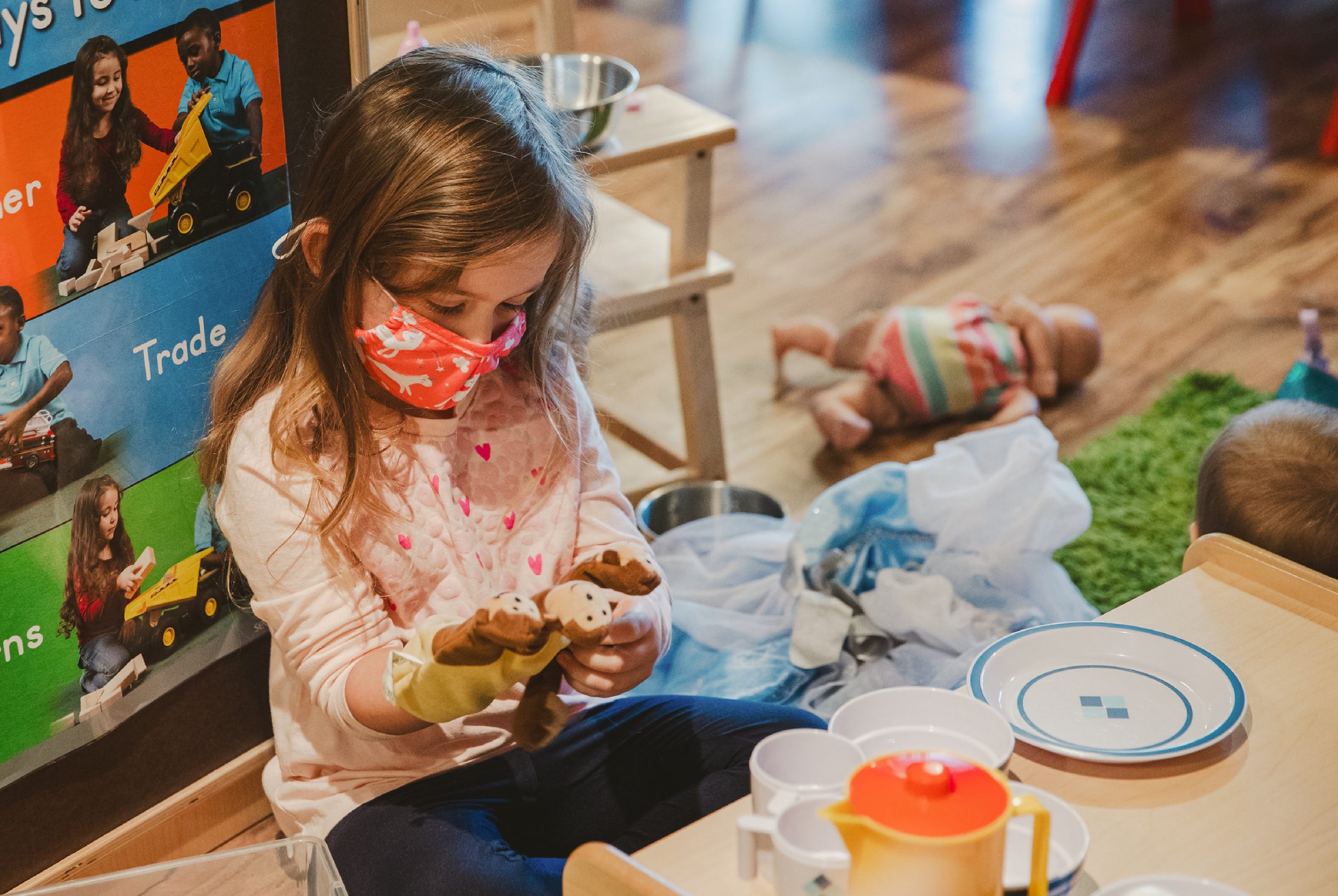
Once you’ve introduced children to mindfulness, they can start diving into some more comprehensive activities. As a parent or provider, this should not be stressful for you. Be sure to reference the many easy guides online for ideas, and simply have your children follow along and listen. Here are a few:
Be Like Nature: Mindfulness for Preschoolers
A 4-Minute Meditation for Kids
Clouds: A Guided Meditation for Kids
Mindfulness activities are just one way to boost the quality of care
You may already have mindfulness activities in your curriculum without realizing it, and we hope these tips give you ideas for new, fun ways to step it up a notch. If you’re ready to learn other ways to boost the quality of your care, Step Up to Quality helps great child care providers become even better. If you’re a parent who’s on the search for providers who are committed to quality care, check out our search tool to find options near you.
Let’s Get Musical: Incorporating Music in the Classroom and Home
Whether your child will become the next Mozart or strictly stick to banging pots and pans around the house, music can be an excellent aid in their development. Music-related activities help children develop fine motor skills, improve language development, increase the neural activity within their brain, and help them to understand how different objects go together. With all these reasons and more, music can be an integral part of a child’s early education.
Benefits of music in early childhood development
While encouraging children to sing “Sweet Home Alabama” won’t make them smarter, researchers have found a direct link between language development and learning music. According to the Children’s Music Workshop, recent studies have clearly indicated that musical training physically develops the part of the left side of the brain known to be involved with processing language, and can actually wire the brain’s circuits in specific ways. Linking familiar songs to new information can also help imprint information on young minds.
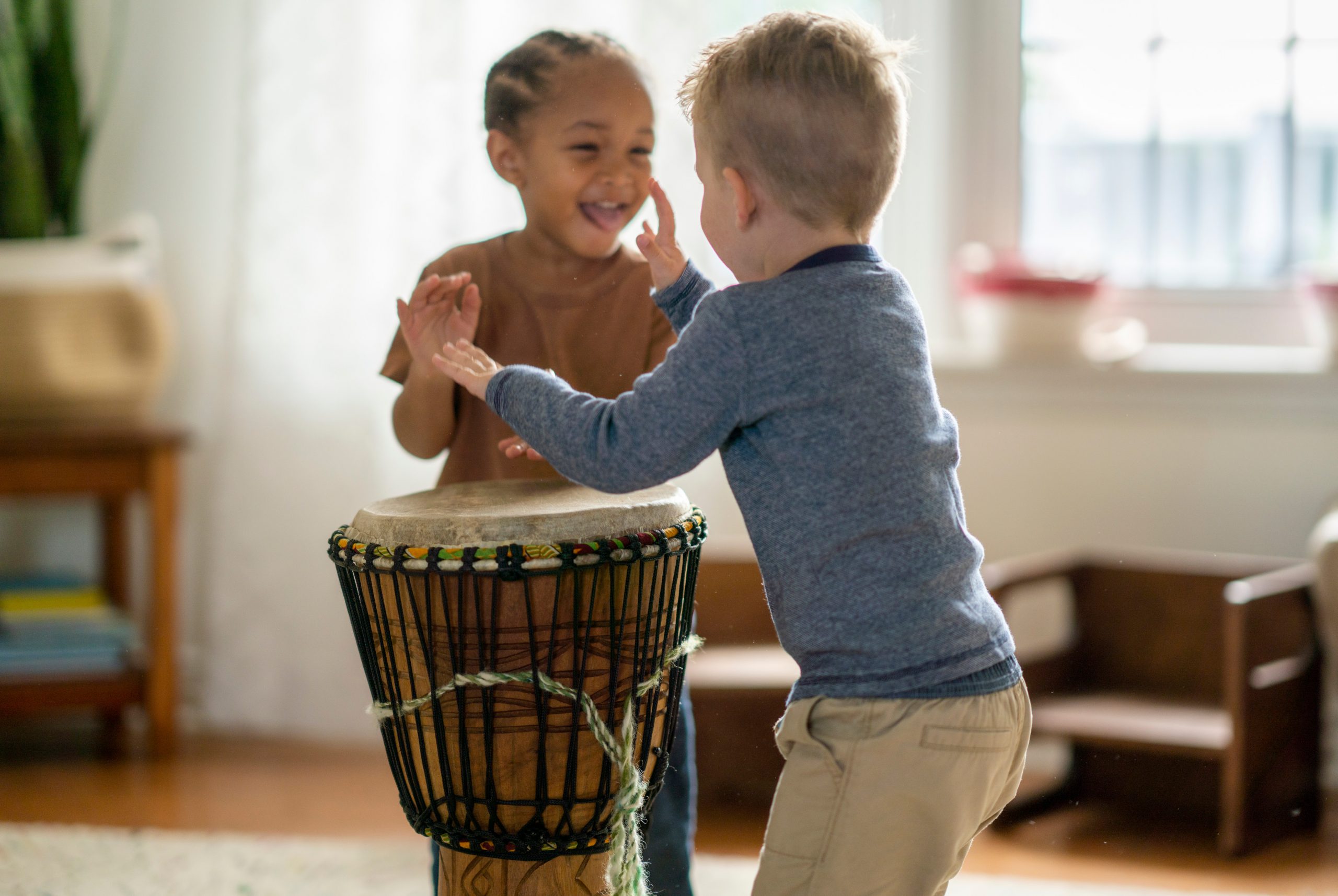
Making music can also help to connect brain and body movement. When a child claps their hands or stomps their feet to a song, they understand that their movements are making noises. Creating that understanding through a fun activity like music listening will not only help their brain to body movement but also their fine and large motor skills. While these things seem so simple, they help build important connections throughout many parts of the brain.
Children also learn how to express their emotions during these early years. While children sometimes have a hard time getting their emotions out, creating songs or games can help them to understand how to show someone what they are feeling. They can start to learn that a slower tempo usually means sadness, while an upbeat, fast tempo correlates with happiness or joy.
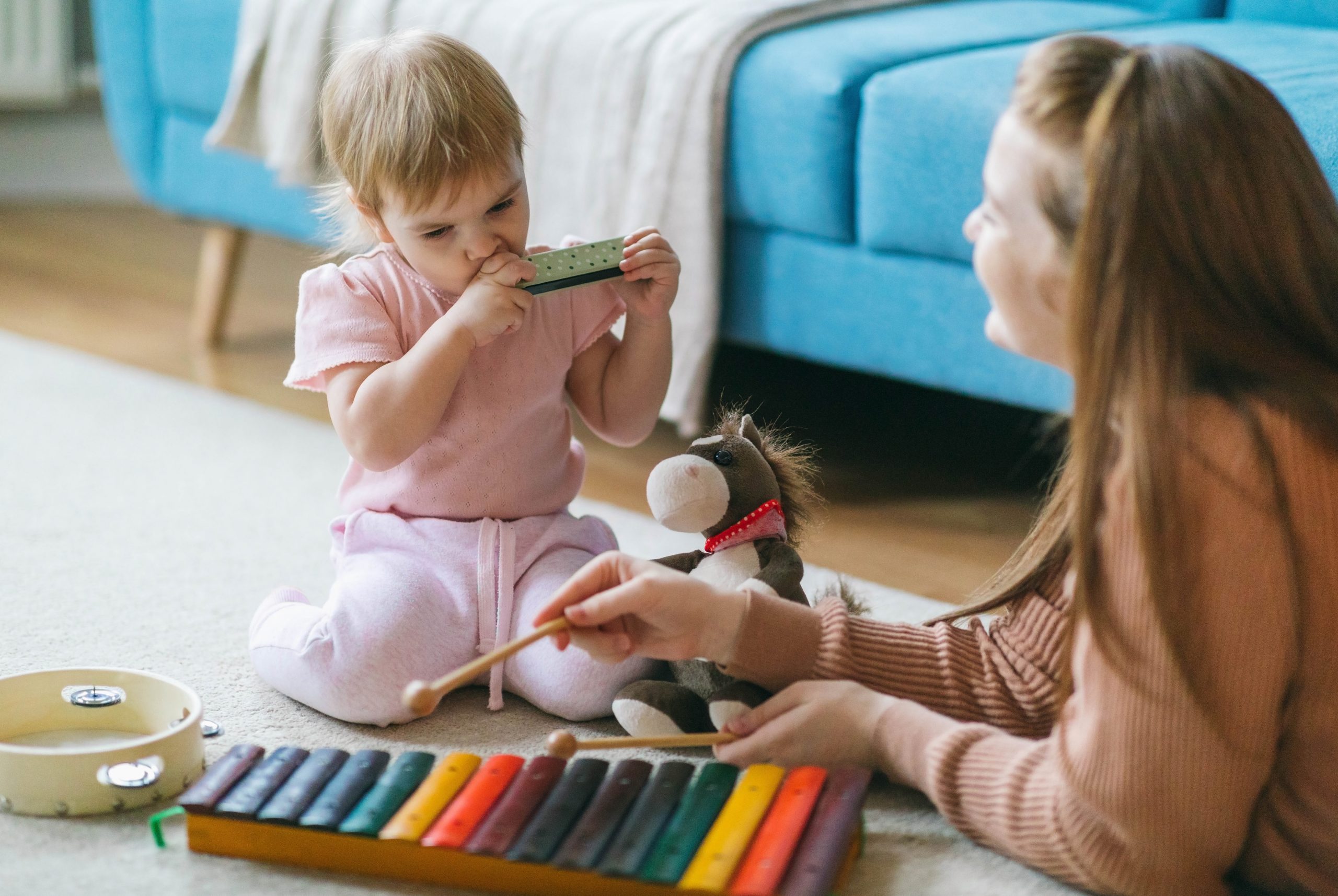
Tips for incorporating music into your home and classroom
There’s a whole spectrum of music-related activities, from simply listening to creating music. Following these tips can help turn any classroom or home into the School of Rock!
Let children make their own instruments! If you allow children some freedom, they will surprise you with how ambitious they are. Here’s an example of an easy DIY musical instrument:
Bell bracelets
- Gather medium to large craft bells and pipe cleaners. Make sure the bell size does not present a choking hazard for young children.
- Help children thread the bells through the pipe cleaners.
- Twist the pipe cleaners ends together.
- Now the children have tambourines to shake with their hands or wear on their arms!
Allow children to move their bodies while listening to music. If you show them how to move slower during a down-tempo passage and faster during an up-tempo passage, it will help them to understand how the brain and body are working together.
Another great idea is to have the children sit in a circle, each with an instrument in front of them. Let them take turns being the leader and creating their own beat. Once they have created their beat, have the other children try to mimic that beat. This helps children understand that different instruments make many different sounds.
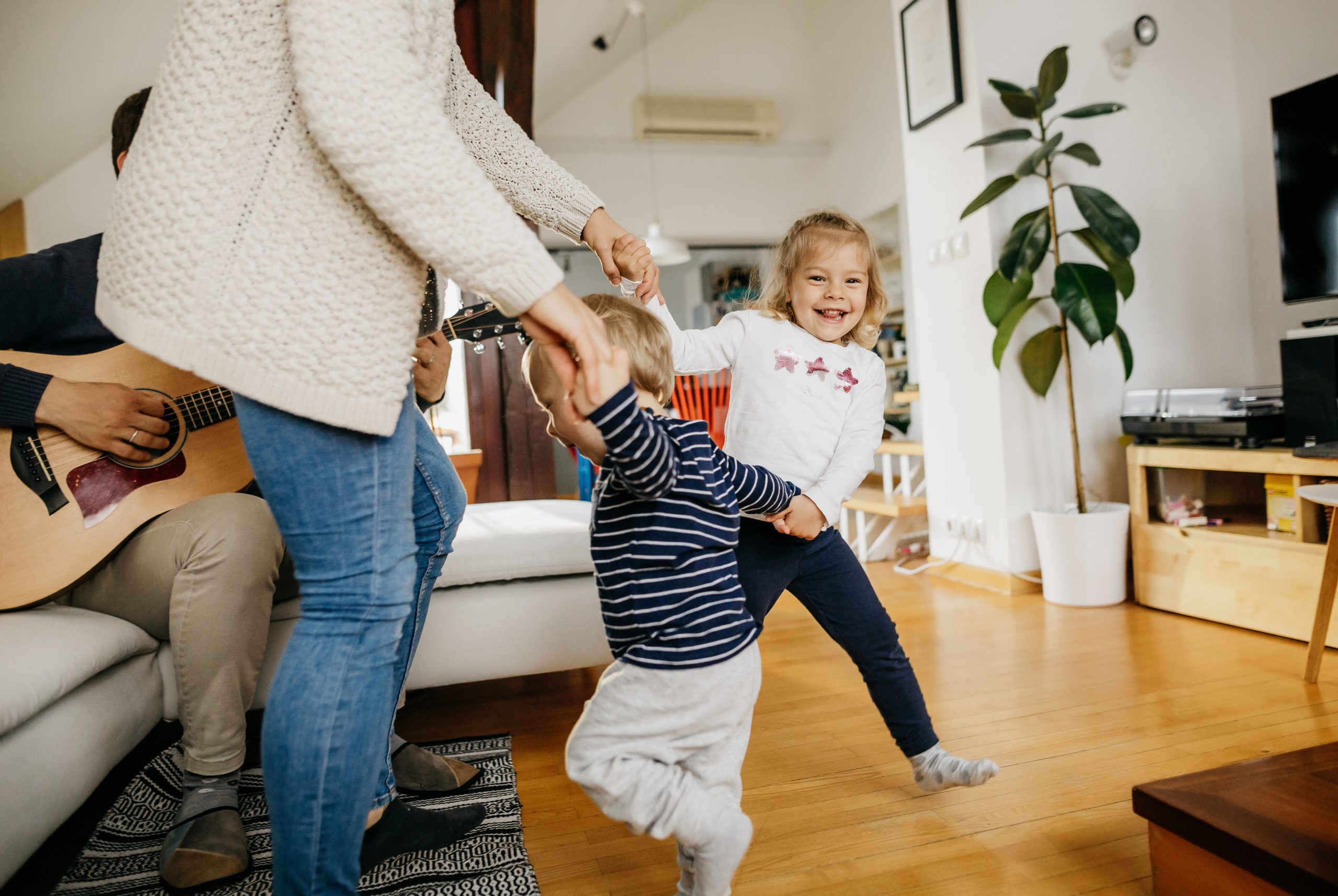
Interested in other ways to boost quality?
Many child care providers already have music in their curriculum, but we hope these tips give you ideas for new, fun ways to step it up a notch. If you’re ready to learn other ways to boost the quality of your care, Step Up to Quality helps great child care providers become even better. If you’re a parent who’s on the search for providers who are committed to quality care, check out our search tool to find options near you.
Make the Most of Water Play This Summer
Whether you’re preparing for summer activities in the classroom or in your home, children greatly benefit from the wonderful world of water play. Playing with water presents a range of opportunities for children to develop their fine and gross motor skills, to work on sharing and social skills, to explore concepts of math and science, and to relax and have fun while learning.
How to build your own water play environment
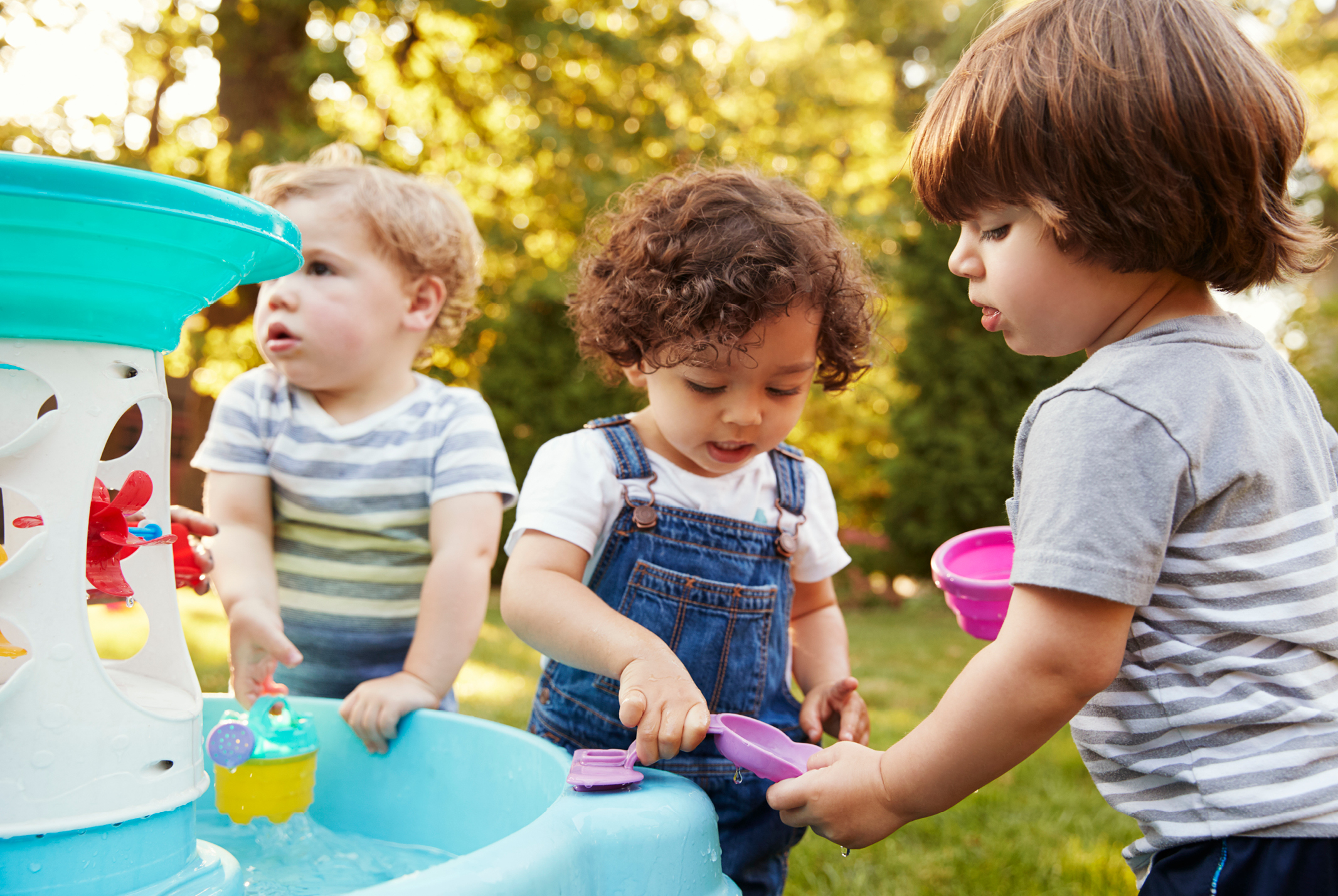
Water play can be as simple or as elaborate as your budget allows. While there are pre-made water play tables for purchase, it’s easy to create your own with items you may already have.
In the classroom, a water play station could be several shallow plastic bins outdoors or indoors over a tarp. At home, it could be a bathtub filled with a few inches of water or a baby pool in the yard. Common items from school, home or nature, like cups, ladles, squeeze bottles, toys, leaves or sand, are a good place to start — but the possibilities are endless, and children will enjoy a variety of options.
Make sure the items can’t easily break and are child safe. We recommend avoiding straws for very young children. All water play should always be supervised by an adult.
Connecting water play to learning
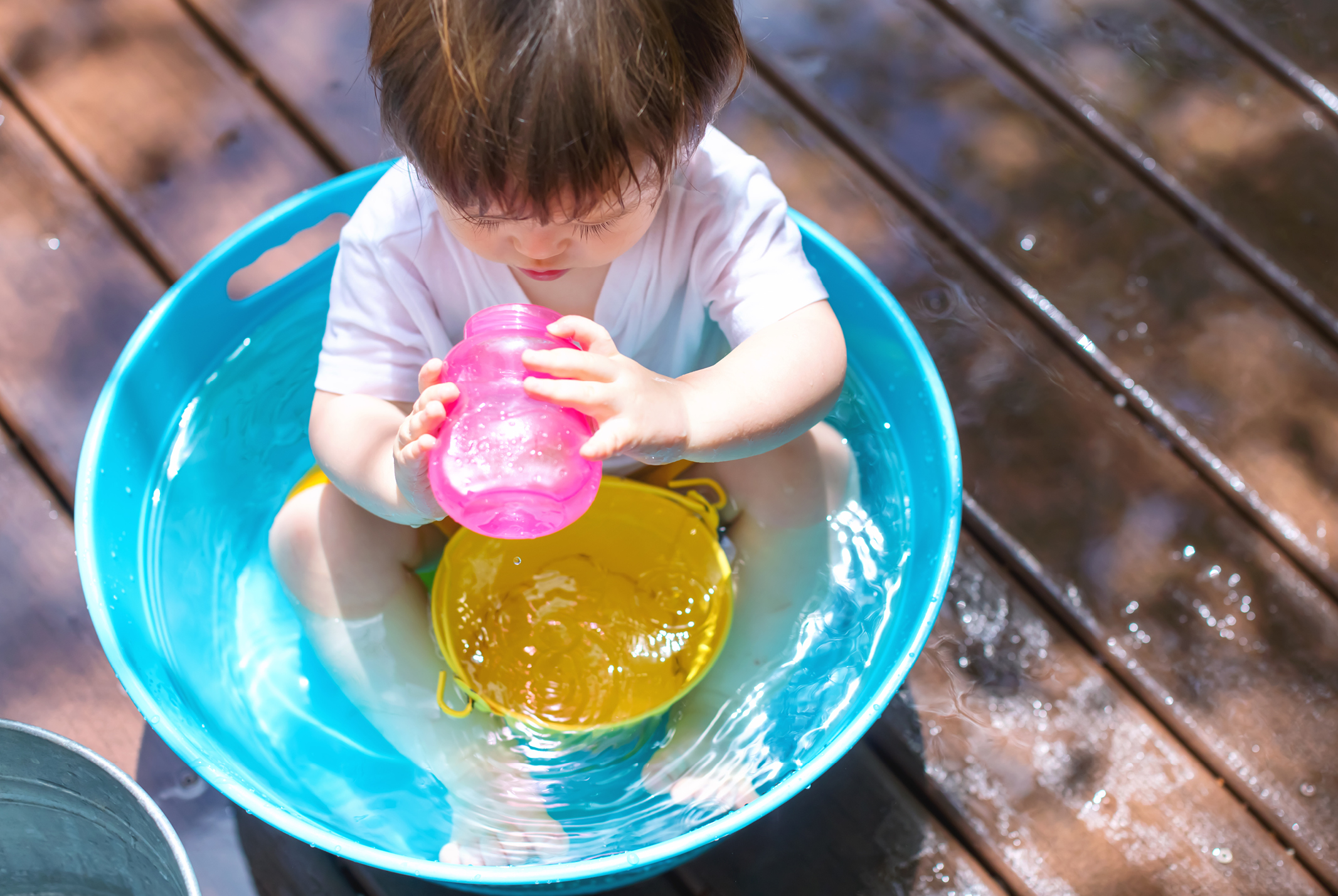
Once you buy or build an environment, it’s time to play! Water play activities present many opportunities for learning and skill development.
Children can increase their fine motor skills and hand-eye coordination by using tools to grab, pour, squirt, stir and squeeze. Because water play typically occurs in a limited space with few supplies, children can also practice their communication and social skills by sharing tools with each other and working together to achieve a goal, like moving water from one bucket to another with cups.
Exploration and learning is plentiful in water play. Basic mathematics concepts like full, empty, half and less, or measuring amounts of water and comparing volumes, can have fun, hands-on application in water play. You can also take dry substances, like dirt, sand or rocks, and allow children to explore how adding these items to water can change their properties.
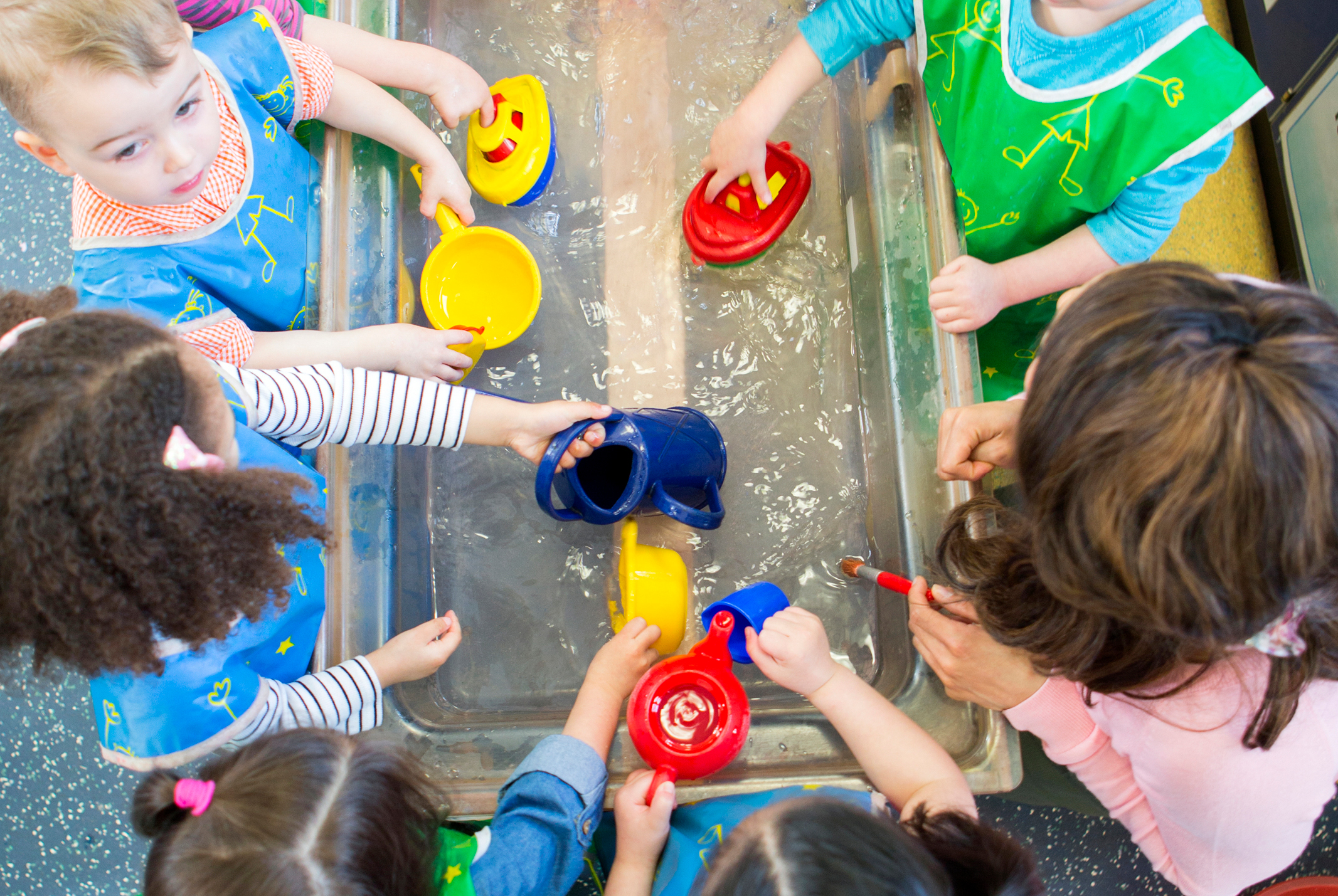
To make the most of water play, be an enabler — not a director. Water play, like other forms of play, is most impactful when children take an active role and ownership in their experiences as the leaders of their learning journeys.
- Structure your water play area to have interesting and challenging materials. Once children get used to using certain tools, try incorporating others for play. For example, if children have been using tongs to pick up objects out of the water, introduce ladles as another method. You can also alter the water itself: add a few drops of mild dish soap to create bubbles with a whisk or wand or add food coloring to explore what combinations create new colors.
- Ask open ended questions, such as “What do you think will happen to the volume of water if we drop this rock in a cup?” This is a chance for you to model new vocabulary with children and encourage prediction.
- Give children the chance to debrief the situation, telling others what they did and learned through play.
Many child care providers already have water play in their curriculum, but we hope these tips give you ideas for new, fun ways to step it up a notch. If you’re ready to learn other ways to boost the quality of your care, Step Up to Quality helps great child care providers become even better. If you’re a parent who’s on the search for providers who are committed to quality care, check out our search tool to find options near you.
650+ Reasons to Be Thankful
We’ve declared 2022 The Year of Quality, and while we celebrate the quality child care providers enrolled in Step Up to Quality all year long, we especially want to lift them up on National Provider Appreciation Day, which happens on the Friday before Mother’s Day every year.
Participating in Step Up to Quality means that child care providers are already going above and beyond regular licensing requirements to continuously improve the quality of their care. During the pandemic, providers across Nebraska went even further to ensure the safety and health of the children they teach and nurture every day.
There are more than 650 providers participating in Step Up to Quality across Nebraska now. We want each of them to know how much we appreciate their hard work. There is no doubt in our minds that they are quality. Which is why we recently sent them a reminder of this, as a thank you for all their extra efforts.
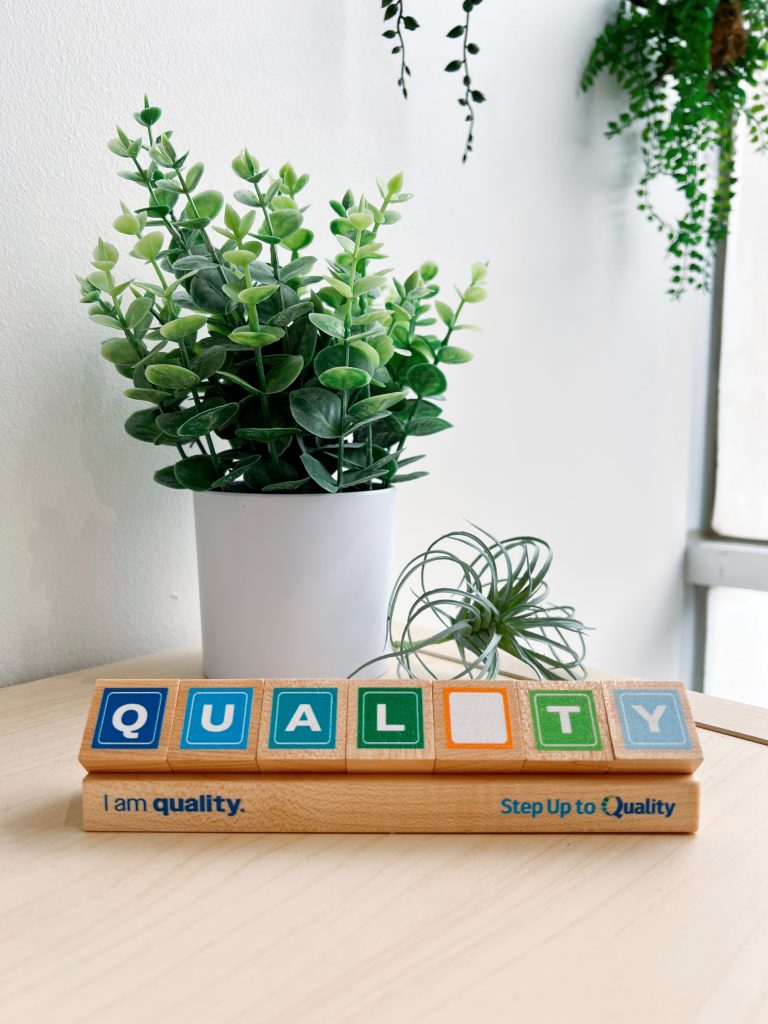
If you have a child enrolled at a family child care home or a center, please thank the teachers, directors, cooks, custodians, volunteers and everyone involved in educating your child. While this is an extremely rewarding field, these have been the most difficult times in recent memory. A sincere “thank you” from parents goes a long way.
To our valued providers: your work matters. The children in your care are learning, developing and growing because of you. Thank you for being a part of the Step Up to Quality family. We appreciate you. You are quality.
How to Shift Children’s Art Activities to Focus on the Process
Artistic expression is beneficial in early childhood settings, especially when it comes to unrestricted exploration. As a child care provider, you probably already have art activities in your curriculum. Or as a parent, you may have art projects that you facilitate for your child at home. But are these activities focused on the product or the process? Examining the difference and incorporating these tips can help improve your quality of care and strengthen children’s development, like fine motor, language and cognitive skills.
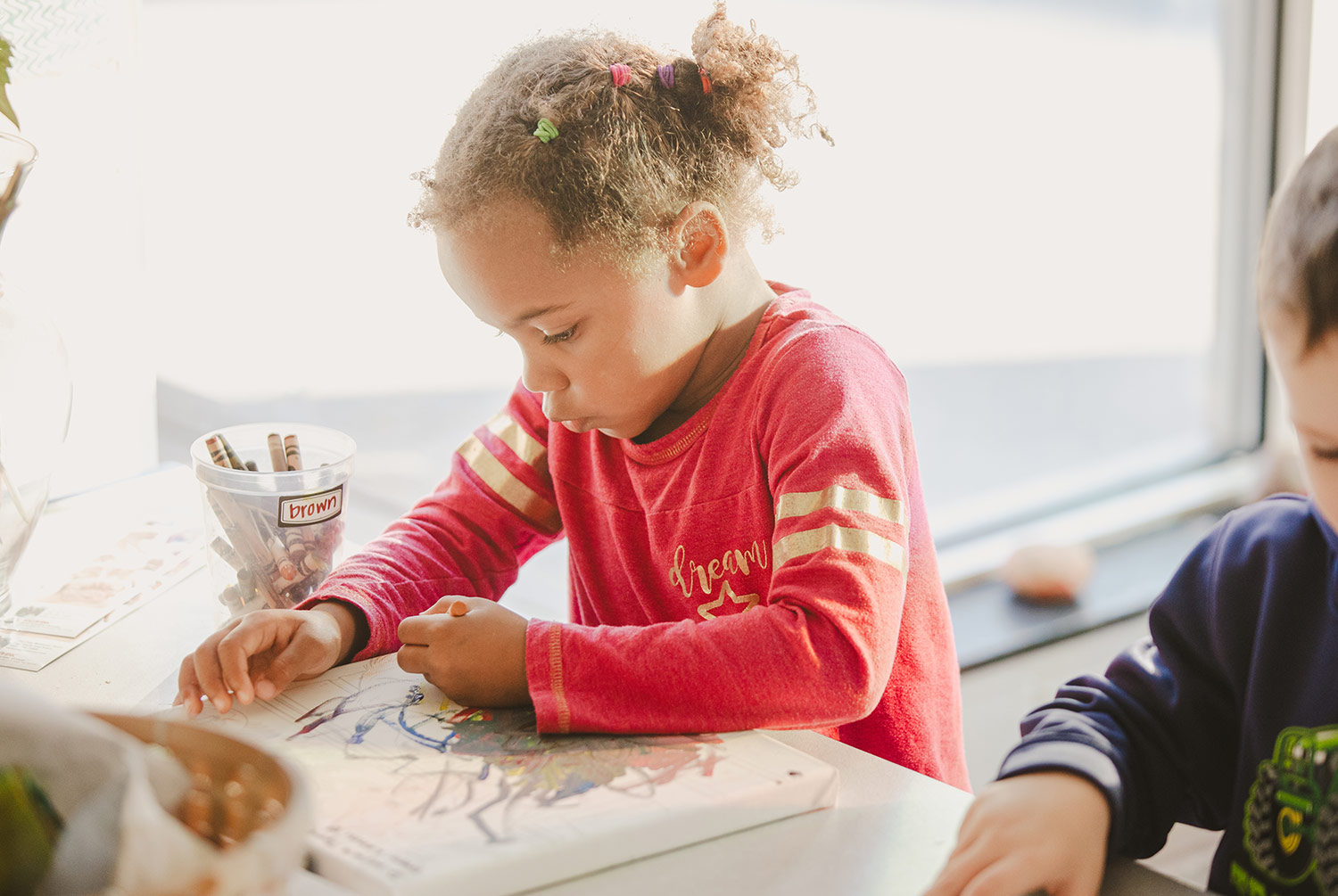
What is process-focused art?
Process-focused art is when children are given an open-ended project to express themselves through their work. There are no step-by-step guidelines or samples to model where everyone’s final piece looks the same — which may leave children feeling frustrated if they don’t “create correctly” or finish their project. Instead, children are given tools and encouragement to explore and create, fostering a sense of enjoyment, discovery and pride in their work through meaningful play.
While painting and drawing are the most frequently visited forms of early childhood art activities, you can consider ways to approach music, theater and dancing through this lens, too.
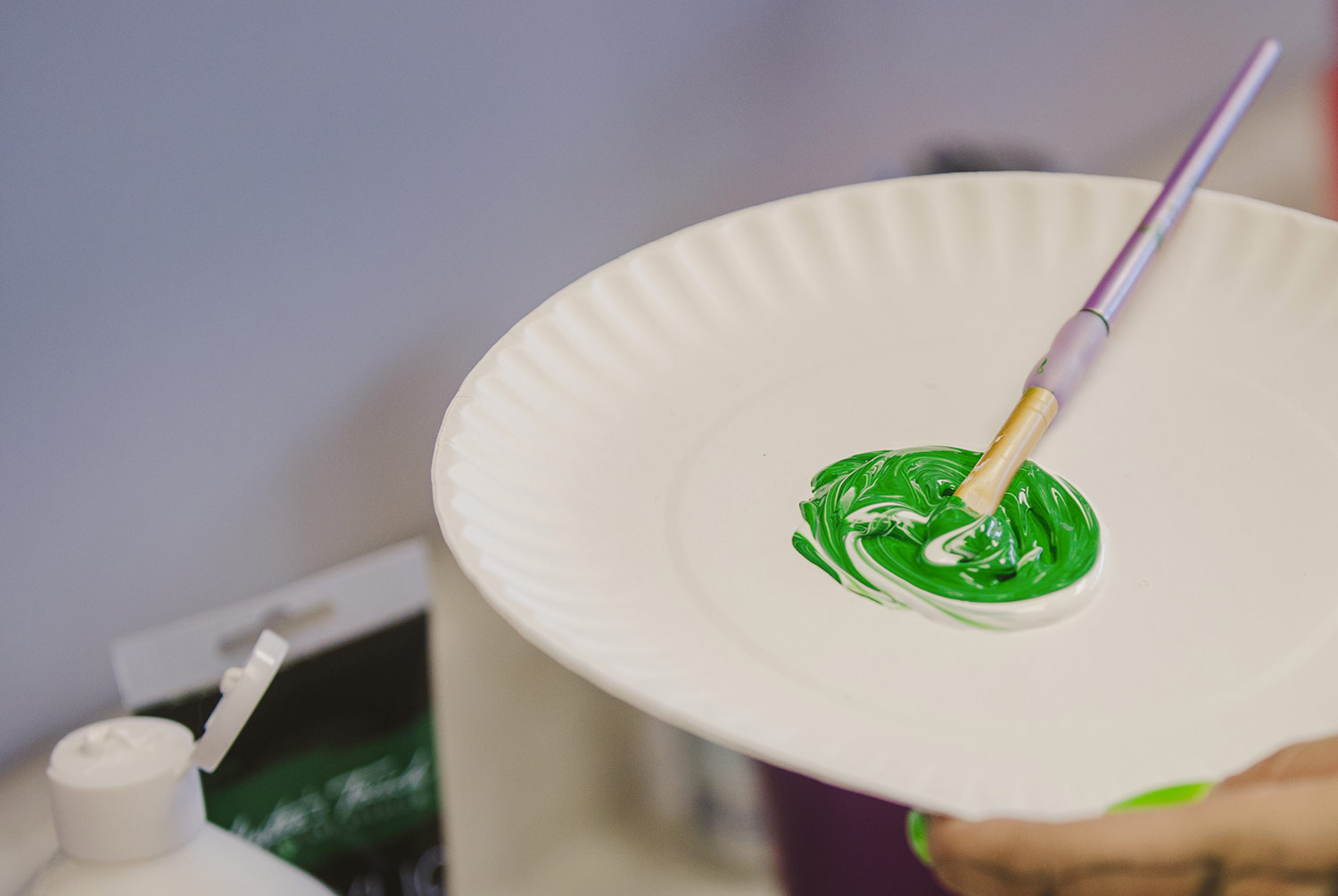
How to guide process-focused art
It may seem like a contradiction to “guide” process-focused art, but as an educator or parent, you’re the one who is setting the stage for the activity and providing the tools for expression. Here are some tips for any type of process-focused art activity:
- Offer self-serve supplies that children can easily use independently
- Allow children to come and go as they please
- Provide interesting art materials
- Allow children to follow their interests
- Keep the focus on open-ended activities that don’t have just one outcome
- Be playful, joyful and encouraging in the art-making process
- Ask open-ended questions and make objective comments about children’s work
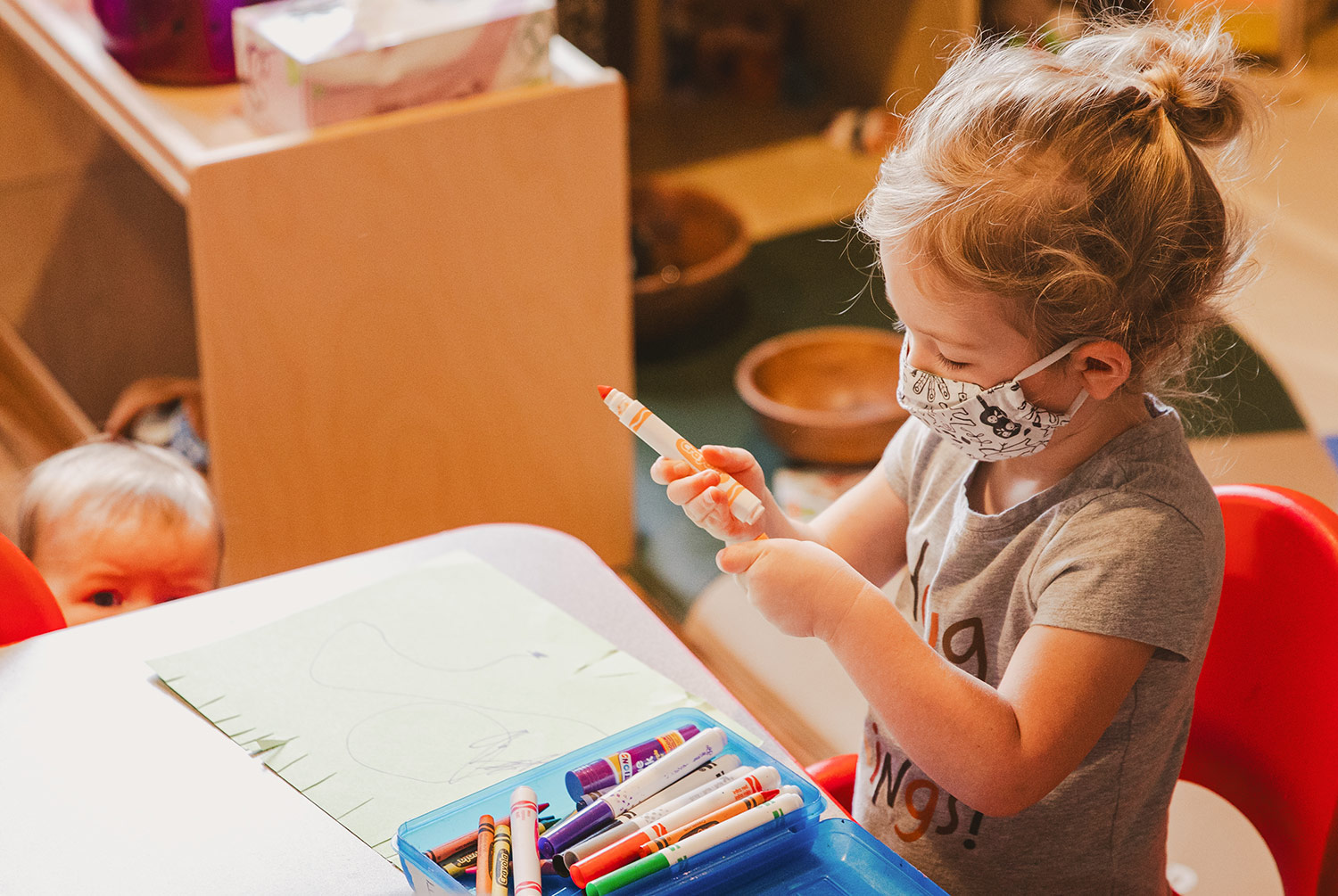
The transition from product-focused to process-focused art can be tough. When children’s end products don’t look intentional (to the children, they are!) or widely vary from each other’s, it can seem like no progress has been made. When planning a process-focused art activity, think about what the children will do first and foremost, rather than what they will make. This will keep your focus on the process and developmental outcomes behind the art experience, rather than prioritizing a “refrigerator-worthy” activity focused on the product.
Step Up to Quality helps great child care providers become even better. If you’re a provider who’s ready to learn other ways to boost the quality of your care, we’d love to have you on board. If you’re a parent who’s on the search for providers who are committed to quality care, check out our search tool to find options near you.
Nebraska Child Care Stabilization Grant: Get Ready for Round Two
In 2021, Nebraska child care providers had the opportunity to apply for the Child Care Stabilization Grant to stabilize the child care sector and ensure families would have equal access to high quality care. Fortunately, many Step Up to Quality providers received funds to help improve the quality of their care during an uncertain time.
Marti Spitz, the director at Beginnings Early Development Center in Hastings, is grateful for the support.
“The Child Care Stabilization Grant couldn’t have come at a better time!” Marti said. “After an uncertain year in the child care industry, we are now able to breathe a sigh of relief. This grant allows us to continue providing quality child care, hire and train new staff, cover expenses and give my dedicated team a much-needed retention bonus. In a field often overlooked, the pandemic has reminded us how vital child care is to families, employers and communities.”
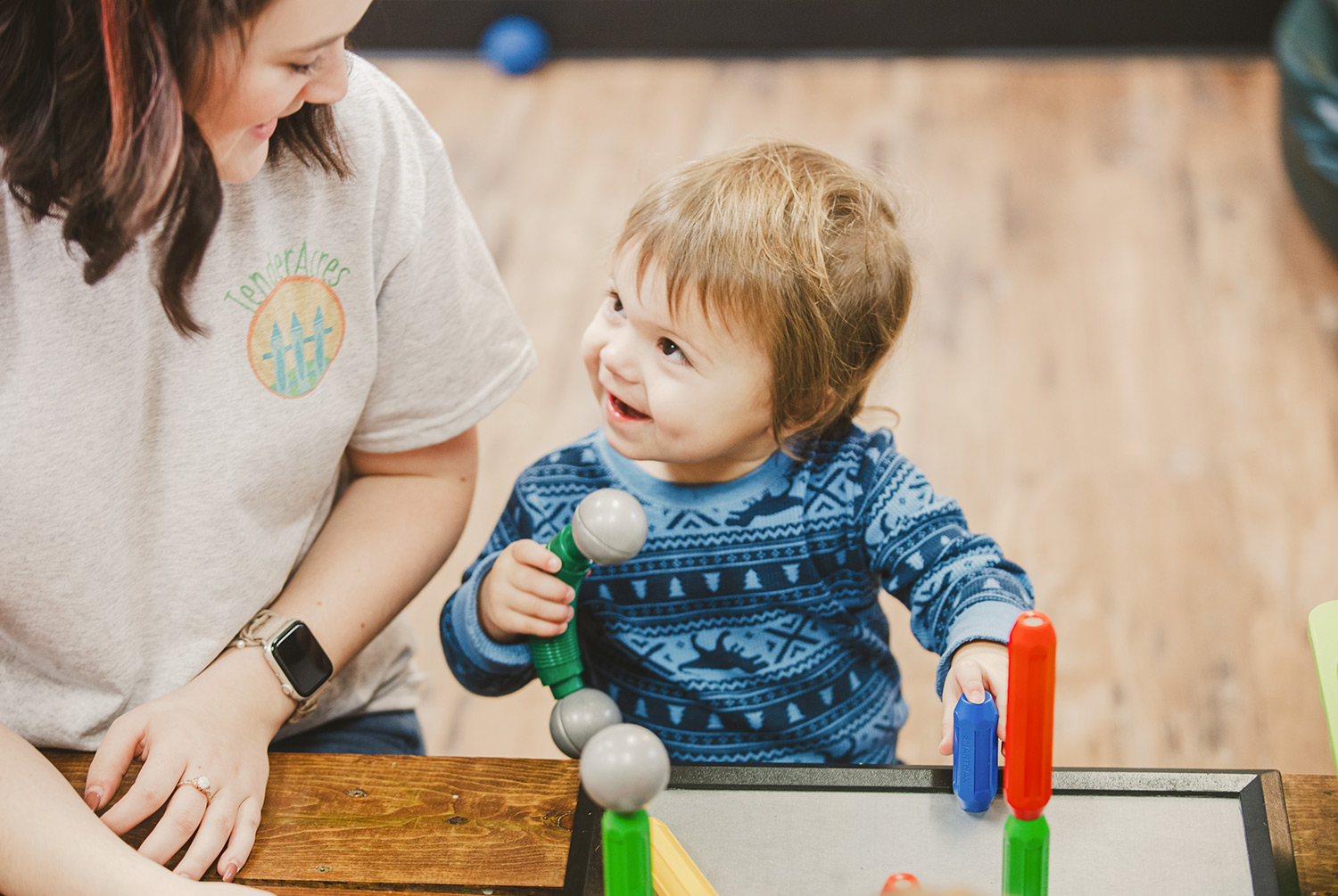
Sue Morse, director of the nonprofit Alpine Village Community Daycare in Verdigre, is also thankful for the relief, especially with a center that normally relies on in-person fundraising events.
“With the ability to use some of the funds for payroll, we were able to provide extra educational supplies for the children, acquire necessary cleaning supplies and give tuition relief for some who struggled to pay for care,” Sue said. “At one point, we had to close for a week because too many staff members were sick. The funds allowed us to give families tuition relief during this time and pay staff a portion of their wage as well. Times have been unusually stressful through all of this. I give all the credit to the great team of employees, awesome community support, and all of our children’s families for our ability to stay open and be as successful as we have been.”
Another chance to apply for grant funds will soon be available
While the first grant application period is over, The Nebraska Department of Health and Human Services will be offering a second opportunity to apply for stabilization grants. The second round of applications will be available in spring 2022, targeting those who did not apply during the first application window and potentially including an expanded list of eligible providers, according to the department.
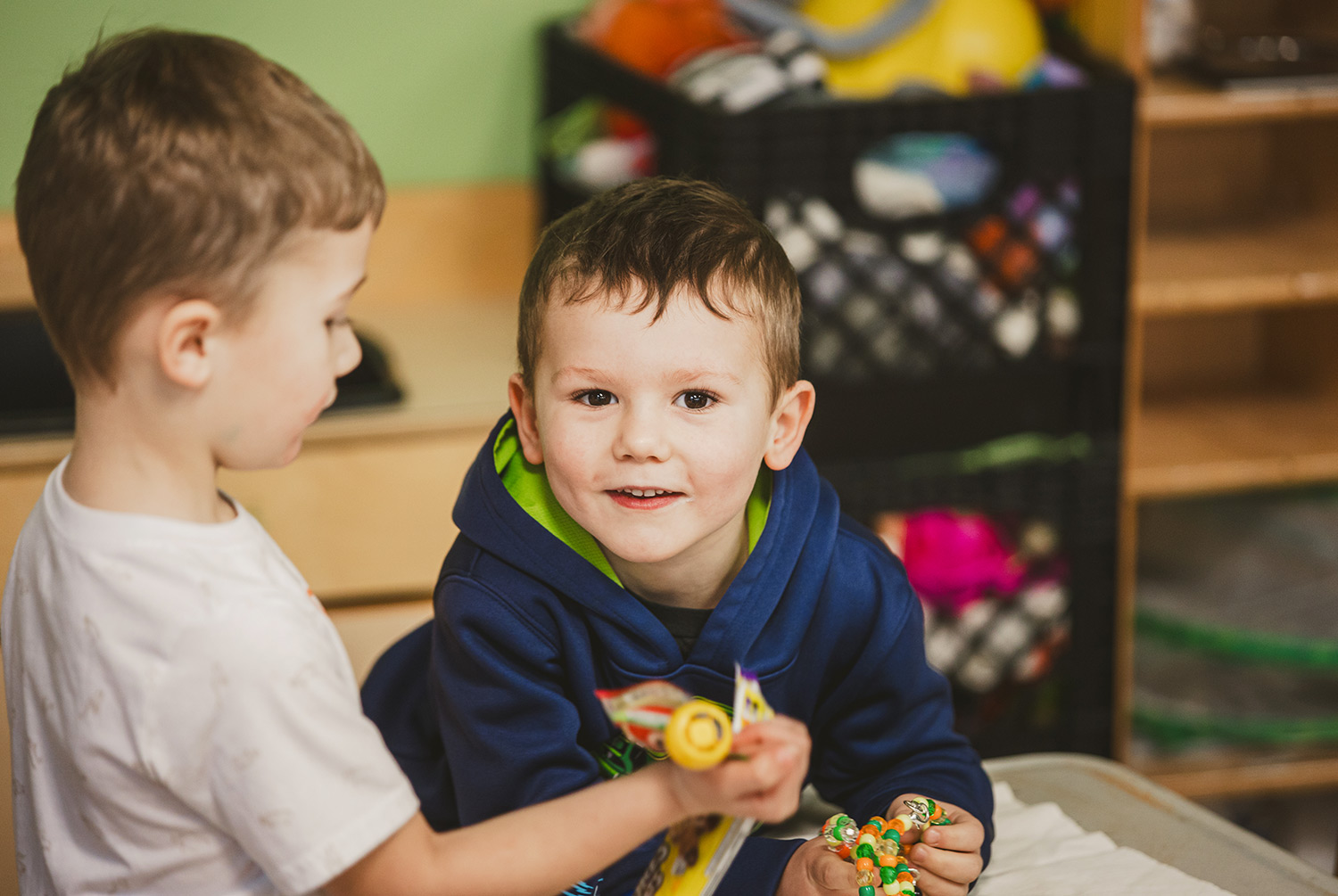
“The responses from providers have been overwhelmingly positive,” said Children and Family Services Director Stephanie Beasley. “From the beginning, we worked for a speedy disbursement of funds and ease of use in applying to ensure providers do not face barriers in receiving the needed funds. I commend the work our staff at the Department of Health and Human Services has done to aid providers in staying open during the pandemic and their commitment to children and families of our child care providers.”
Support for child care providers is always available with Step Up to Quality. Not only does our team alert providers of opportunities like these, we also provide other benefits like professional development and training, a free one-on-one coach, child care subsidy reimbursement and incentive bonuses.
Farm to Preschool Builds Healthy Eating Habits for Nebraska’s Children
Healthful, nutritious food is important for everyone, especially young children. Eating habits start in infancy, and by the time children enter elementary school, those habits are fairly established. So, if we want our children to have lifelong healthy eating habits, early intervention and experience with healthy eating is an important part of their development.
Get connected with Farm to Preschool
The Nebraska Department of Education (NDE) understands the importance of establishing early, healthy habits, so they began to include Farm to Preschool (also referred to as Farm to Early Care and Education) in the work of Nutrition Services in 2015 as a way to provide information to child care centers and family child care homes about the value of doing this activity. Farm to Preschool is not a program that you enroll in — it’s a slate of opportunities that include local food procurement, experiential education and school garden activity that are implemented by centers to educate children on where their food comes from.
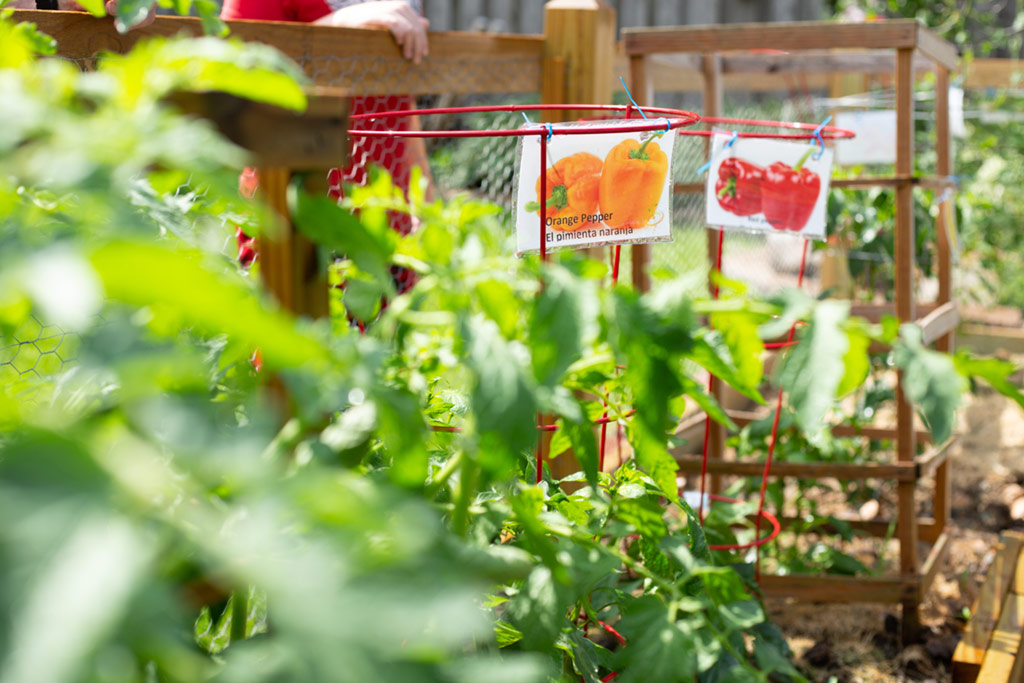
Farm to Preschool activities also support core principles of high-quality early childhood education, the same principles that Step Up to Quality promotes throughout each of its steps. Learning through play, interacting with children on their level and providing tactile educational opportunities can all happen with Farm to Preschool efforts.
The NDE now hosts a comprehensive webpage for Farm to Preschool, providing guidance for providers and families on purchasing local and in-season foods, ideas for educational activities and use of gardens, tools for how to get started, and fact sheets and reports on Farm to Preschool research specific to Nebraska. You can reach out to Marla Kurtenbach, a nutrition services program specialist at the NDE, at marla.kurtenbach@nebraska.gov with any questions about Farm to Preschool, too.
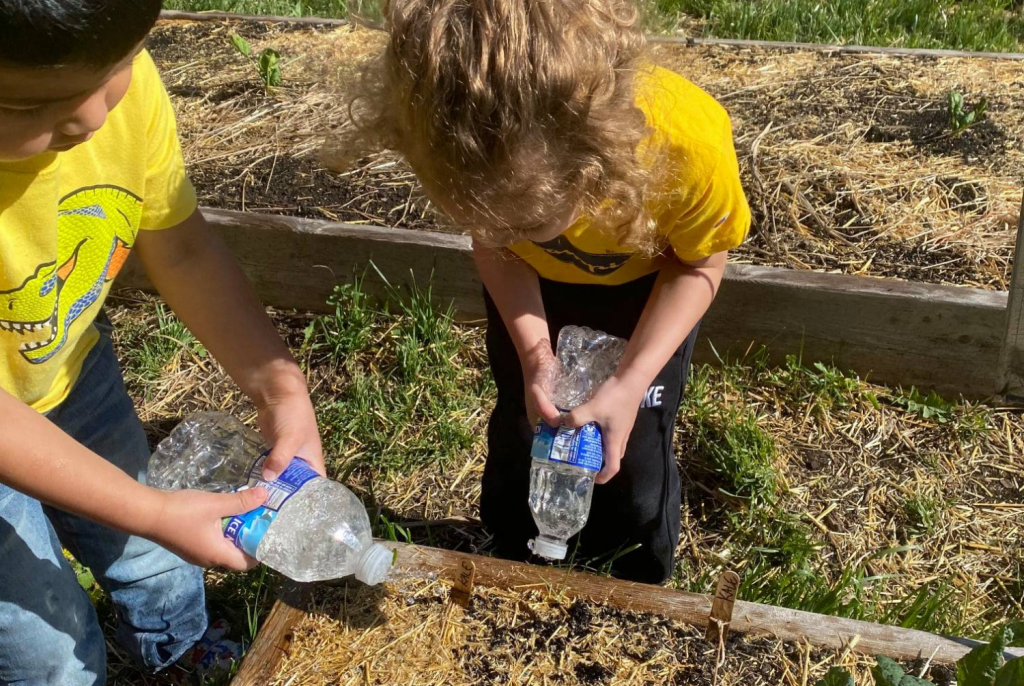
“This doesn’t have to be a huge, time-consuming thing,” said Marla. “Any action can support local food systems, and starting with our littlest eaters just makes sense.”
Getting involved with Farm to Preschool can be as simple as making a commitment to incorporate a local food once a month in the meals you serve to the children in your care. Once you get your footing, you can take it even further: Tour a farm or have a farmer or gardener visit your program, grow your own garden, prepare meals with children or purchase produce from farmers markets to taste test.
Purchasing locally grown food also allows the early childhood education field to support our local economy. When this food is in children’s meals and classroom curriculums, it supports Nebraska’s agriculture today and enables us to plant the seed of interest for a whole new generation of farmers and market gardeners. Check out the Nebraska Farm to Preschool toolkit to find where you can buy locally produced food and drinks.
Tips for incorporating new foods into home meals and child care settings
The earlier children are exposed to a variety of foods, the more likely they will continue these habits as they grow.
“When implementing changes to child nutrition program meal patterns or menus, consider that early child care eaters are still establishing their habits and tastes,” said Marla. “It can be a good strategy to implement changes first at the early child care level.”
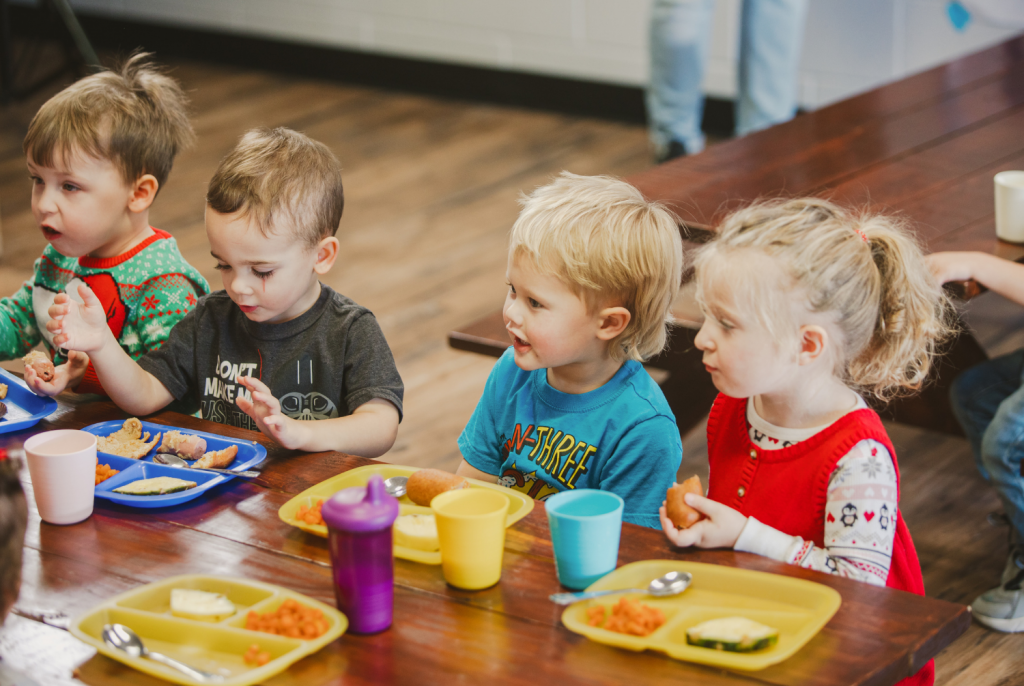
Sometimes, children need multiple exposures to a food to be ready to try it, so don’t pressure them if they don’t develop an immediate interest. Mix new food in with other food that they already know and enjoy. For example, if you know they like a few certain vegetables, mix in one more new vegetable. You can also involve other things children are learning, like colors, into mealtime by using a variety of colorful produce. Nebraska Farm to Preschool provides sample menus for how local foods can be incorporated into meals.
If you choose to start a garden, whether it’s a big plot or a few potted plants, letting children be involved with its care can increase their willingness to try the healthy foods they helped grow.
Interested in other ways to boost quality?
If you’re not already enrolled, we’d love to have you join Step Up to Quality. We serve all child care and early childhood education programs throughout Nebraska with support and resources that continuously improve the quality of care provided. Learn more about our program benefits.



